After breakfast at the Apollo Hotel Amsterdam, we took the train over to The Hague, walked around the historic city center, and visited a temporary observation tower. After, we spent some time at the Mauritshuis, home to Vermeer’s “Girl with a Pearl Earring,” before returning to Amsterdam.
Morning
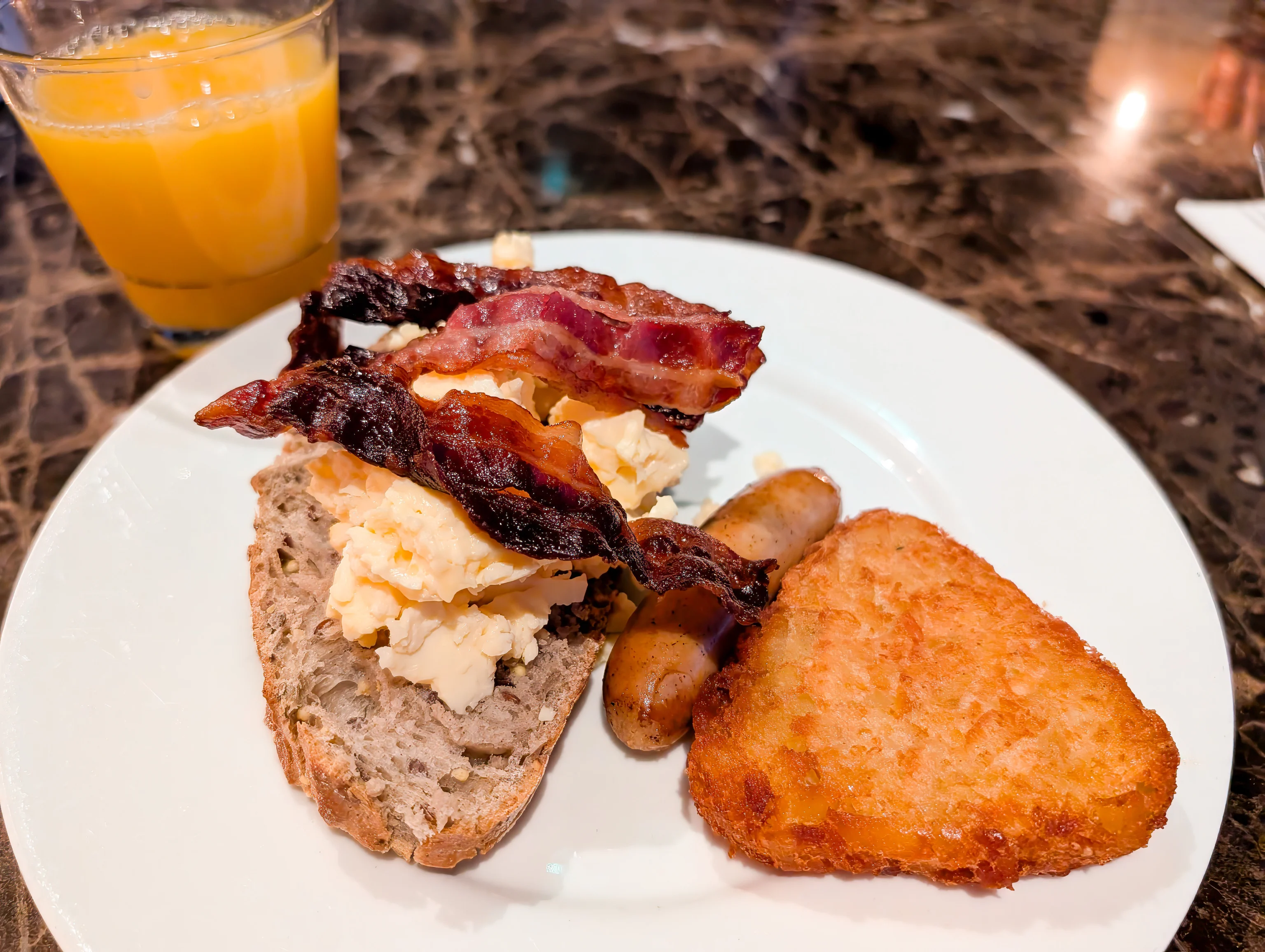
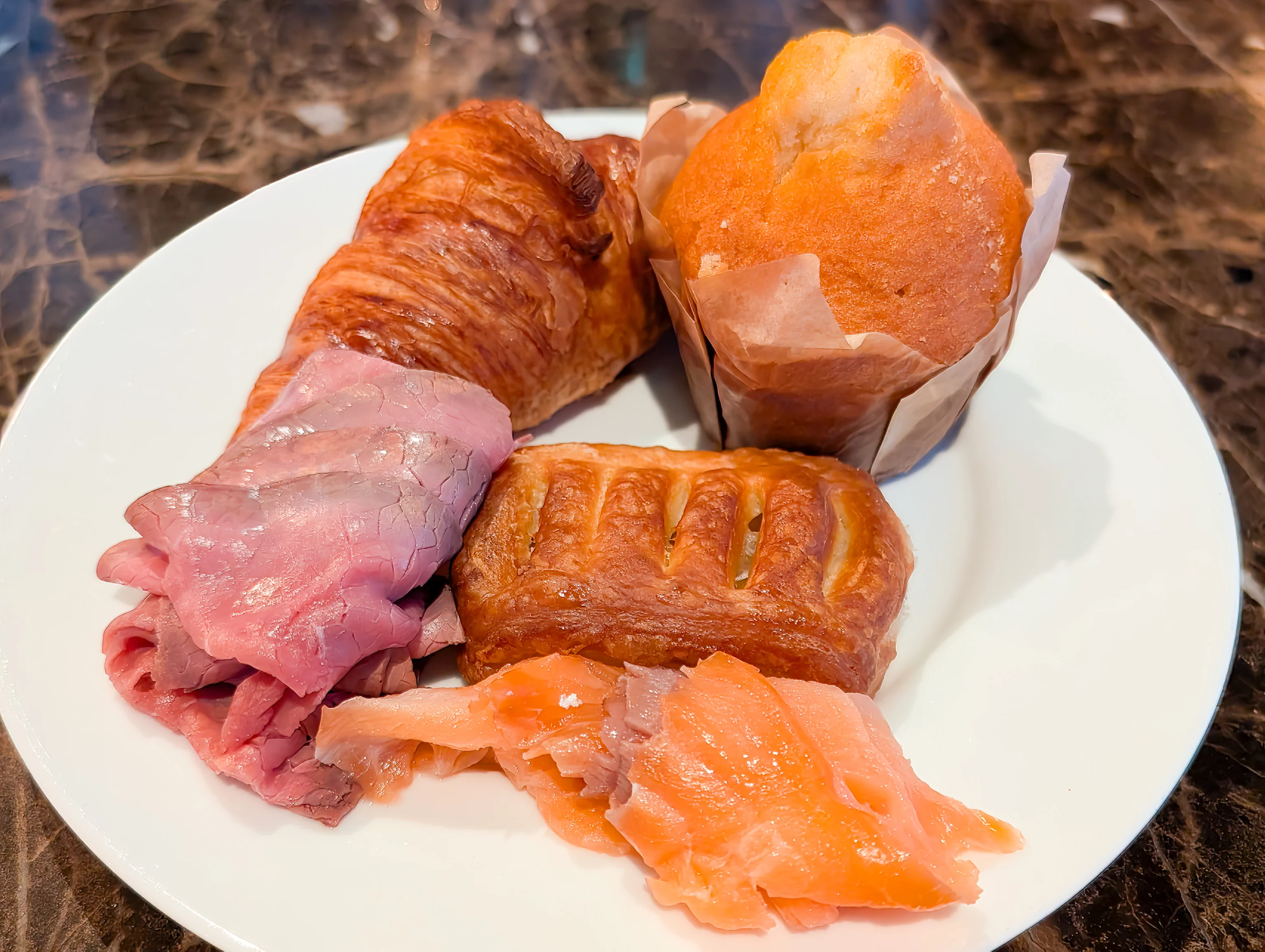
After waking up at the Apollo in Amsterdam, we had our usual buffet breakfast. The best items so far have been the breads, salmon, and roast beef. The hash browns are pretty good too. The bacon has been consistently the worst of all the items.

We decided to head to Den Haag (The Hague) today, leaving the museums that we missed yesterday in Amsterdam for tomorrow. We did make a timed entry reservation for the Mauritshuis, an art museum in The Hague.
We took tram line 5 to Amsterdam Zuid (South). We noticed this very Dutch scene by the station – the huge number of bicycles parked to the side.

There are pictures House Sparrows decorating the main corridor of Amsterdam Zuid. While these small birds are an extremely common invasive species back home in the US, this is their natural habitat.

The weather looked quite good as we waited for the train.
Den Haag

About an hour later, we arrived in Den Haag (The Hague).
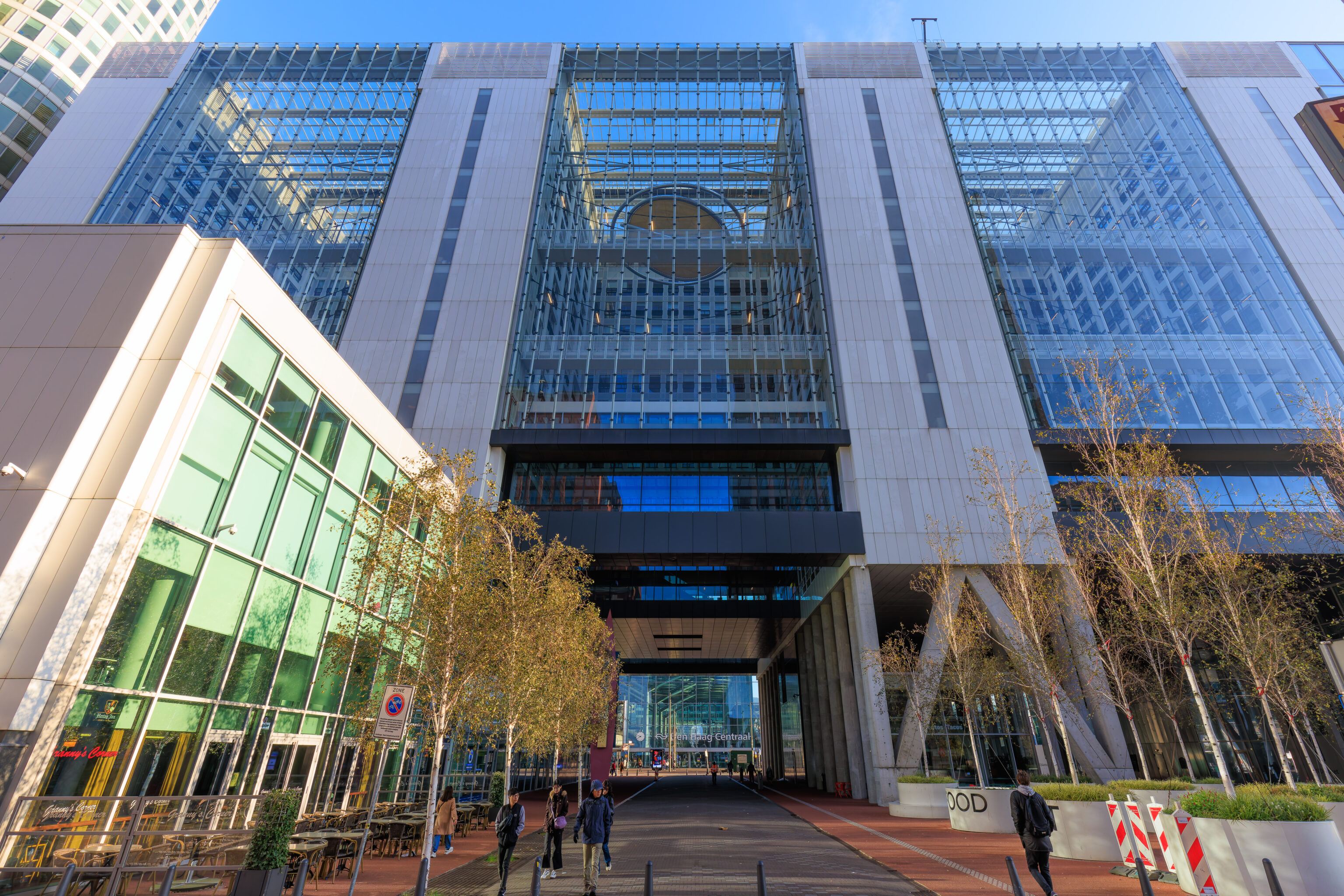
The train station in located in amidst a cluster of modern buildings. We started walking to the southwest to the historic center of the city. Looking back, we could see the train station through another large building.

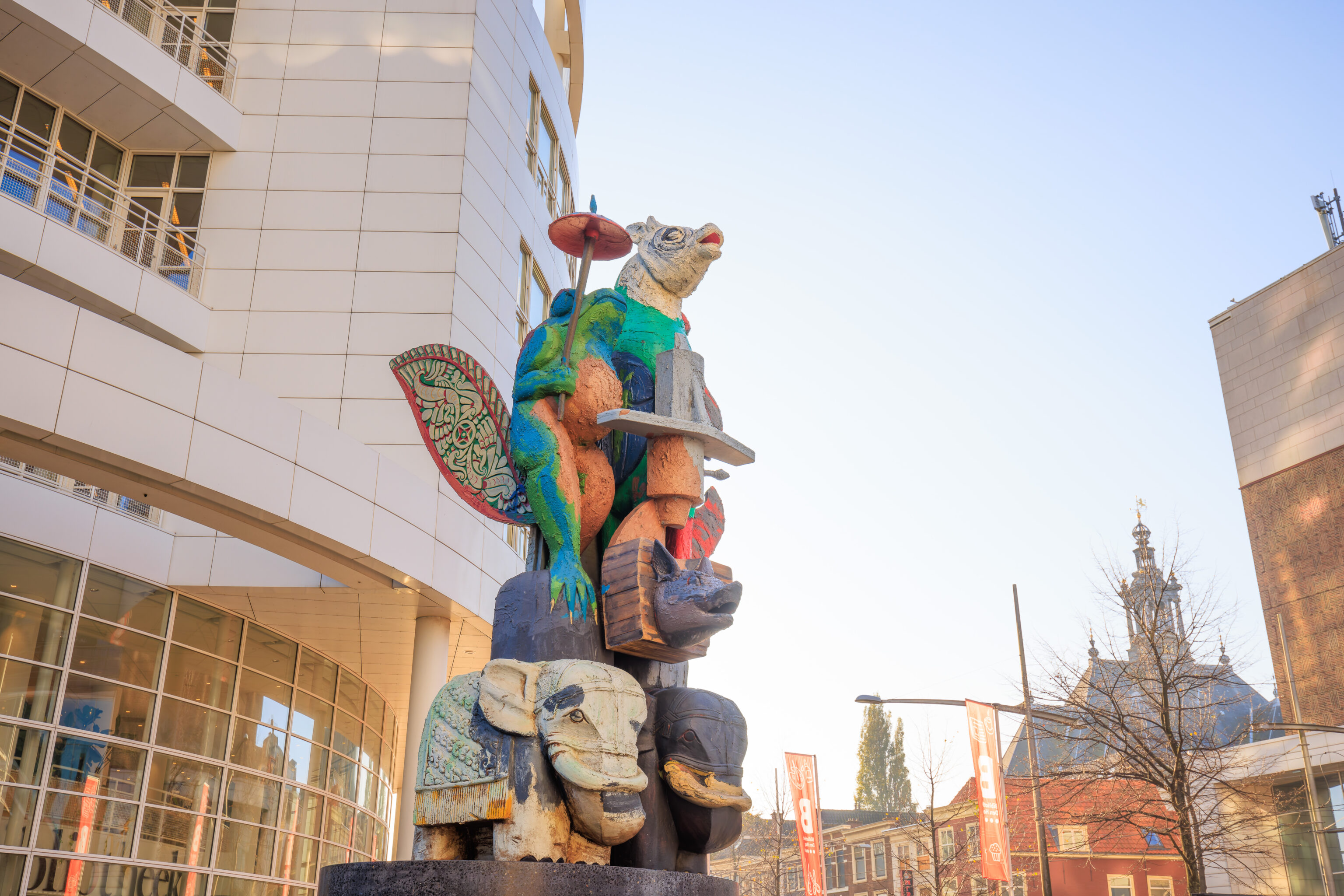

We came across this odd sculpture next to the library and city hall and went for a closer look. This sculpture is Frog with Umbrella by Karel Appel in 2001.

It was pretty quiet at around 10am. This colorful stand was open but there weren’t any customers as there wasn’t really anyone around at all!
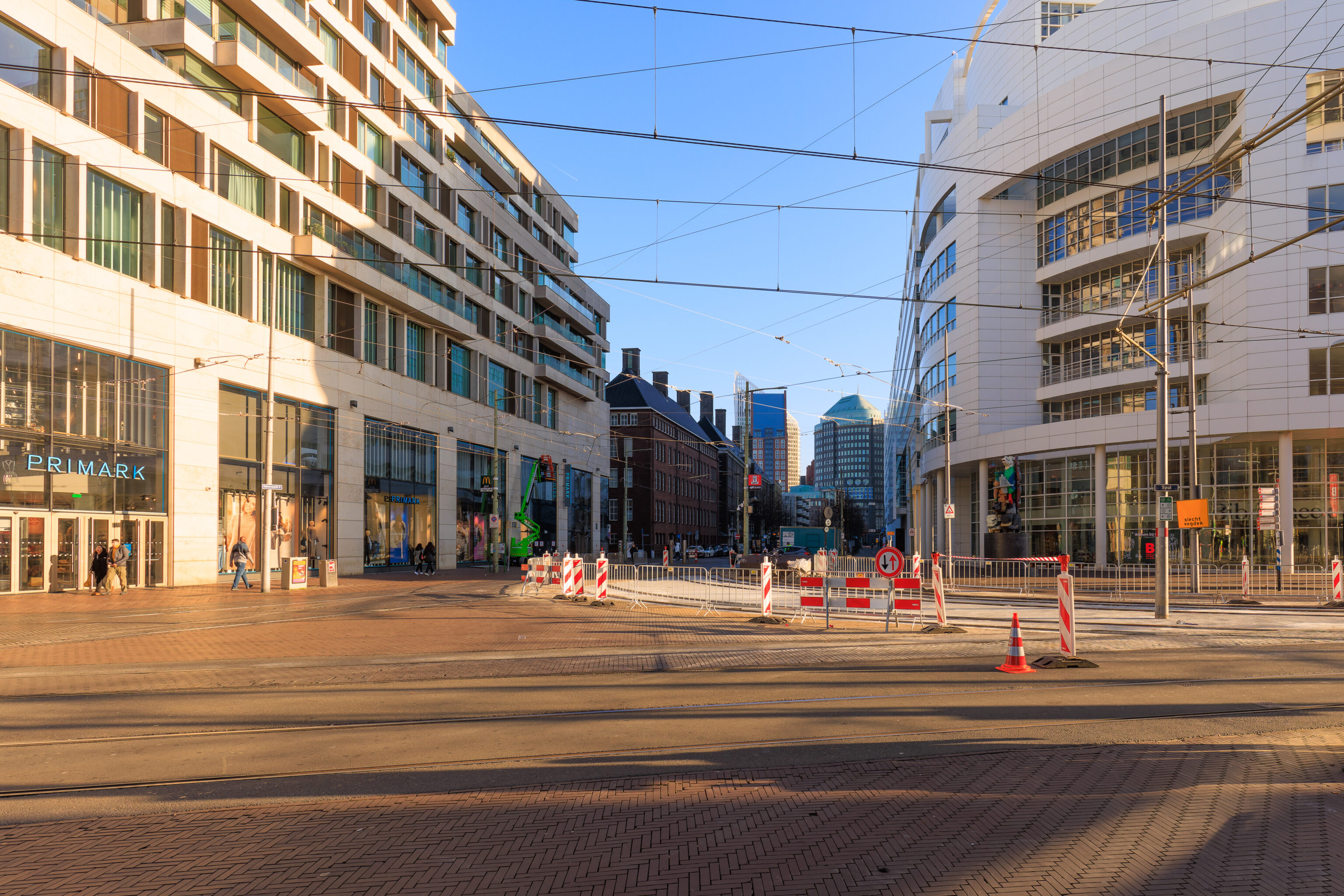
The view to the northeast where we walked from.

We came across this long bench in the middle of a pedestrian street.

We ended up walking to the northwest and came across this tower. We walked closer to investigate. It is the Uitzichtpunt Binnenhof (Binnenhof Viewpoint) and is located next to the Binnenhof, a former castle and current administrative center for the Netherlands. This tower is a temporary structure that was erected next to the Binnenhof while the Binnenhof is being renovated. The plan seems to be for the tower to be removed once the renovations are complete and possibly relocated to a different place.

We also noticed this mirrored floating building next to the tower.




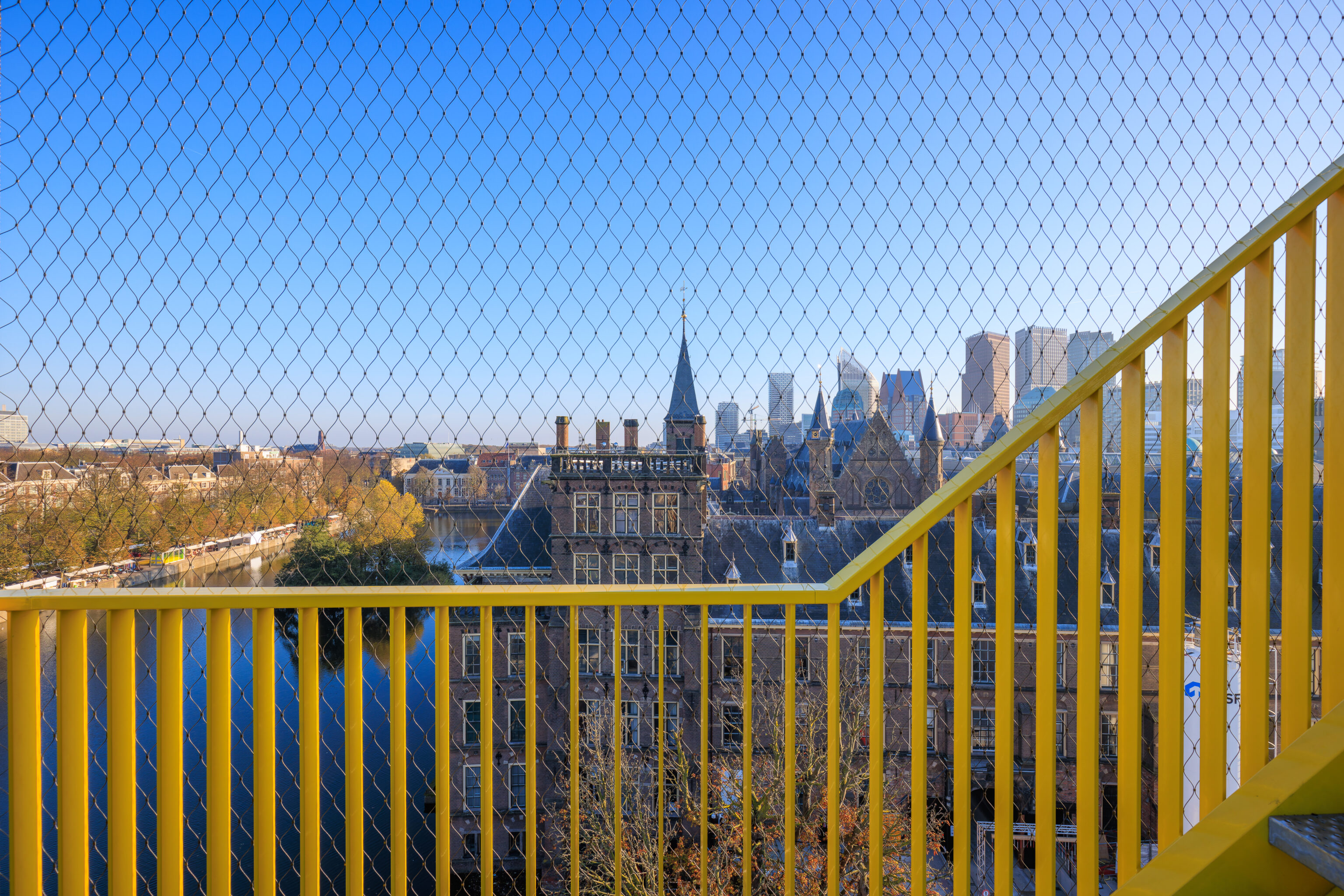

Entry into the tower is free. We decided to go up to take a look. Starting from the second floor up, the side of the tower is enclosed in a wire mesh for safety. The lower part of the tower is pretty stable but the upper parts definitely wobble.

To the southwest, we could see the Grote Kerk (Great Church), also known as Sint-Jacobskerk (St. Jacob’s Church). We plan on heading there to take a look.

To the northwest, we could see an outdoor market below by the Hofvijver, the rectangular lake next to the tower that we were on. In the distance, the tall church tower is Sint-Jacobus de Meerderekerk (Church of St. James the Greater).
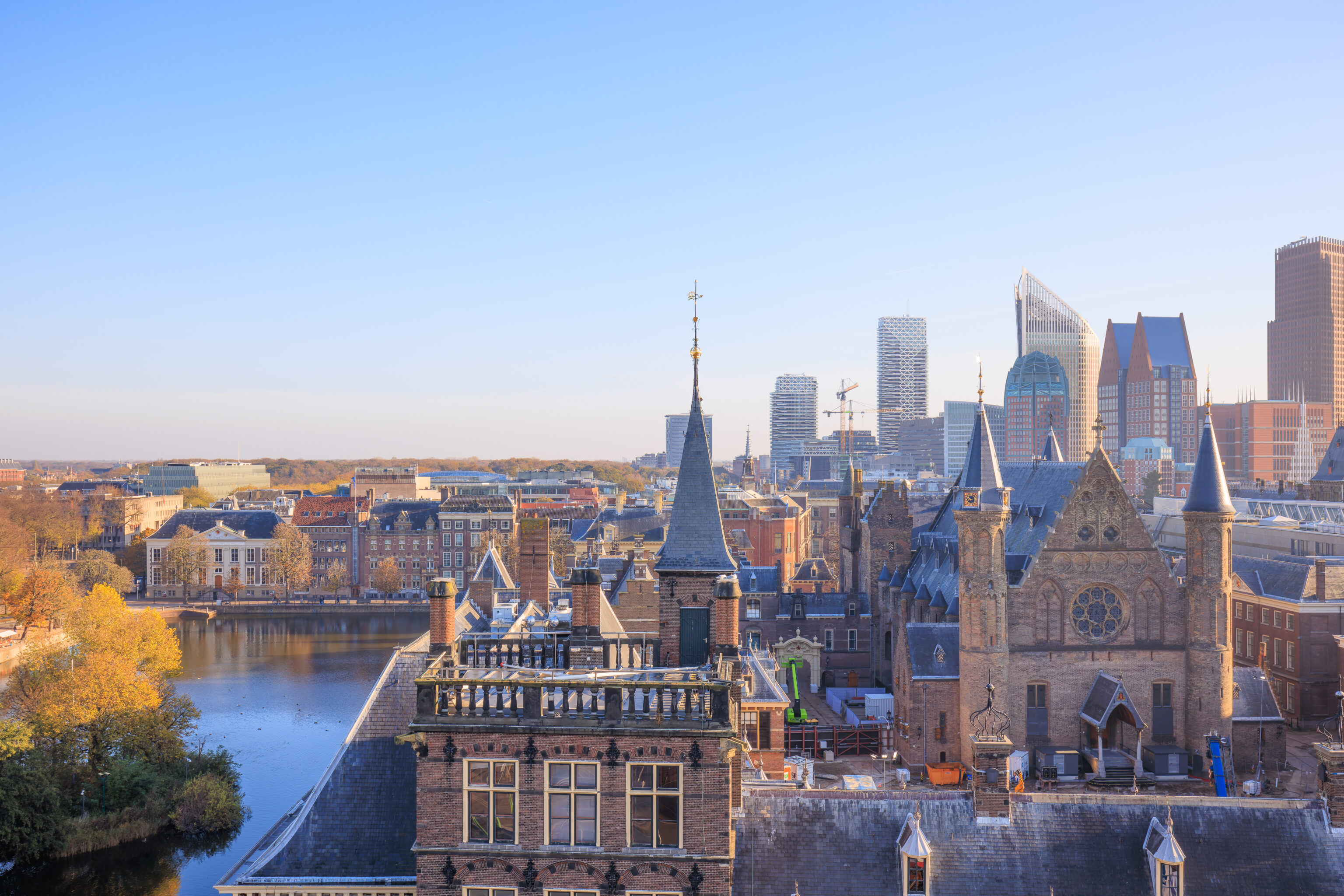
To the northeast, we could see the buildings that make up the Binnenhof to right, with the modern city buildings near the train station in the background. The Mauritshuis, currently an art museum, is at the eastern corner of the Hofvijver and hidden from view by the Binnenhof buildings. We have timed entry tickets for the Mauritshuis at 12:15pm, which gives us two hours to take a look around the city.

Looking to the southeast and into the sun, there isn’t really anything recognizable.

After spending a few minutes at the top of the tower, we headed back down. The mirrored floating building next to the tower has a grassy roof.

The building is a bit reminiscent of a glass facade covering a building being renovated that we saw by the Louvre last year.
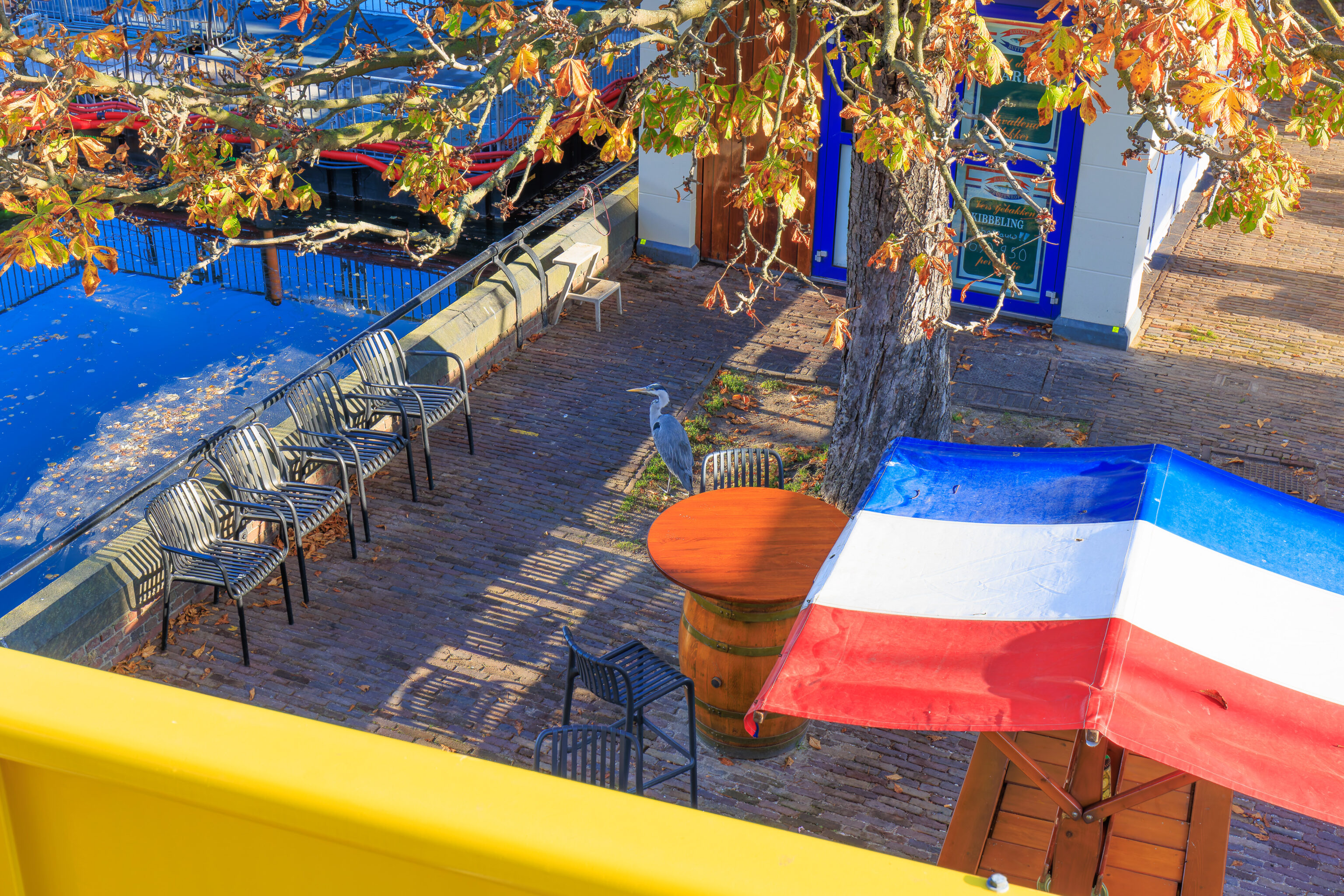

As we descended, we noticed a Gray Heron next to a herring stand by the tower! We watched it for a bit as it hung around. Soon, we saw a stand worker toss out some fish pieces for the heron! The heron quickly snapped up the fish by making quick strikes at it, the same way it would catch a fish in the water. The heron was quick enough that it was able to take the fish before any of the seagulls in the area could react.

The tower from below as we headed away.

We looked back at the tower as we walked away to the southwest. There were only a few people on it when we first saw it. It was definitely busier when we left!
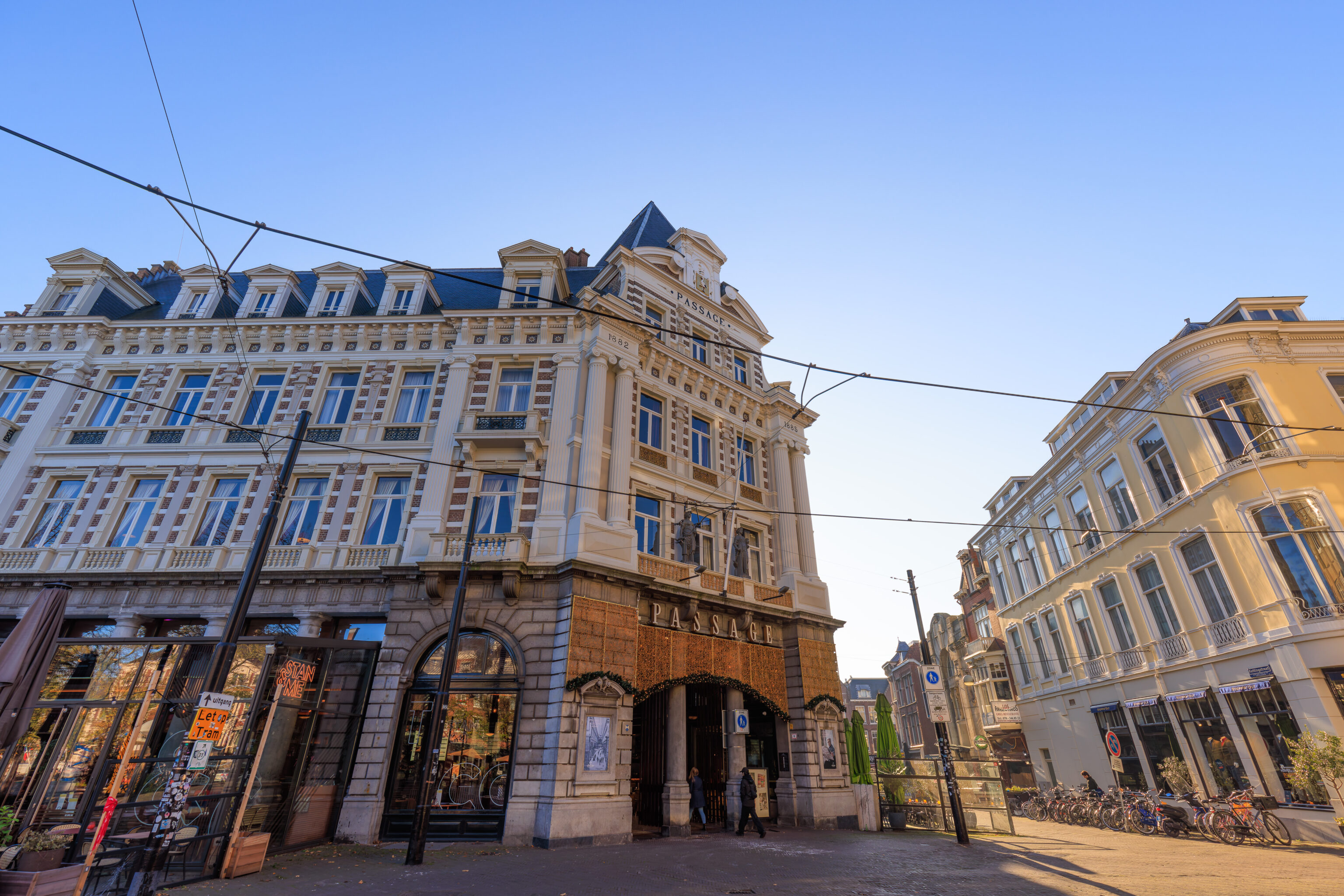

The buildings here are pretty varied in appearance.

This colorful building houses The Sting, a clothing store. It got its name from a 1973 movie named The Sting rather than the more famous Sting. It somehow doesn’t really seem out of place though.
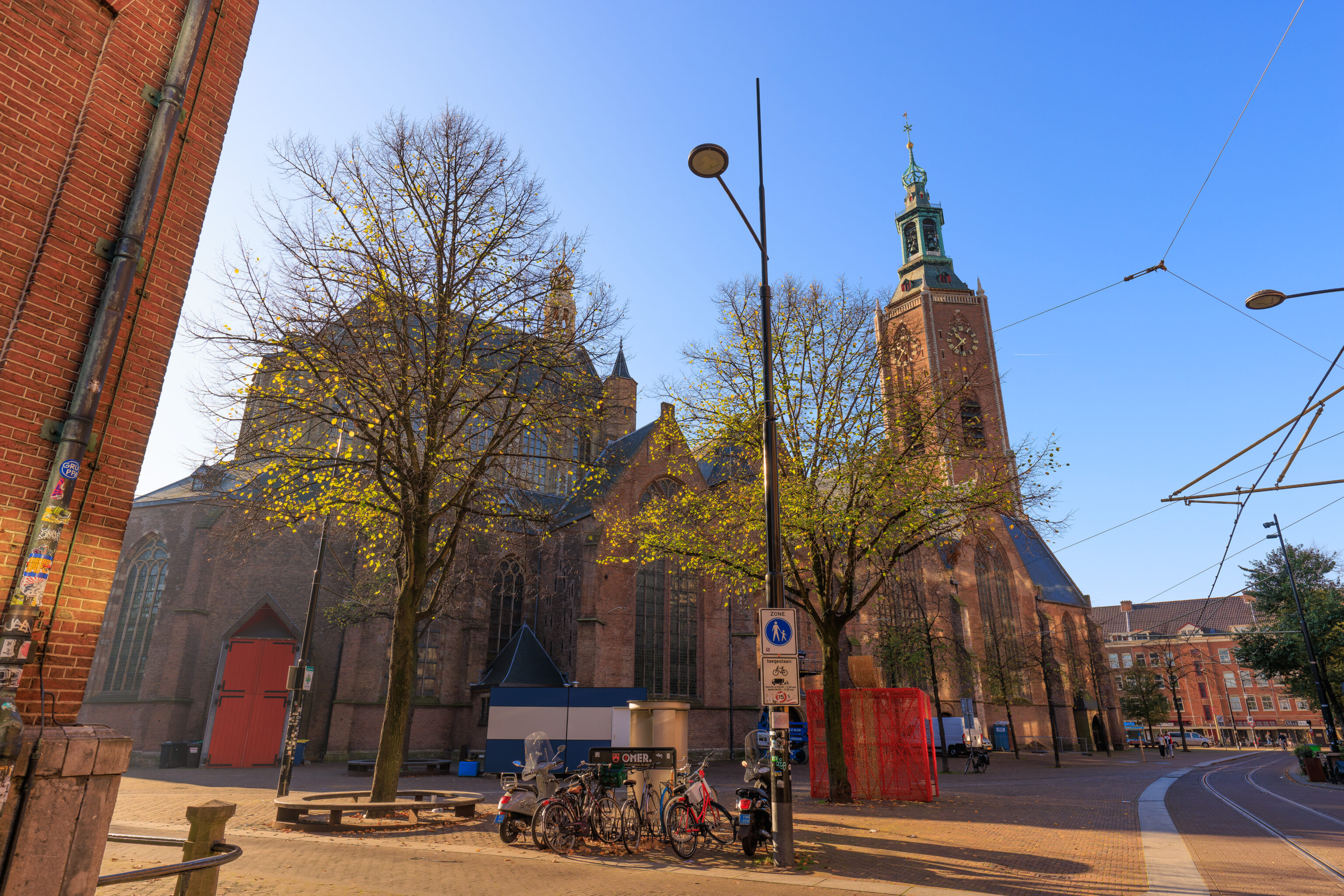
The Grote Kerk was just behind The Sting. We never got a satisfactory view of the building as there just isn’t enough space around to move back to photograph it well. The church is no longer a church but instead is operated as an event venue. It seems to be open for visiting from noon until 4pm as long as there is no event being held.
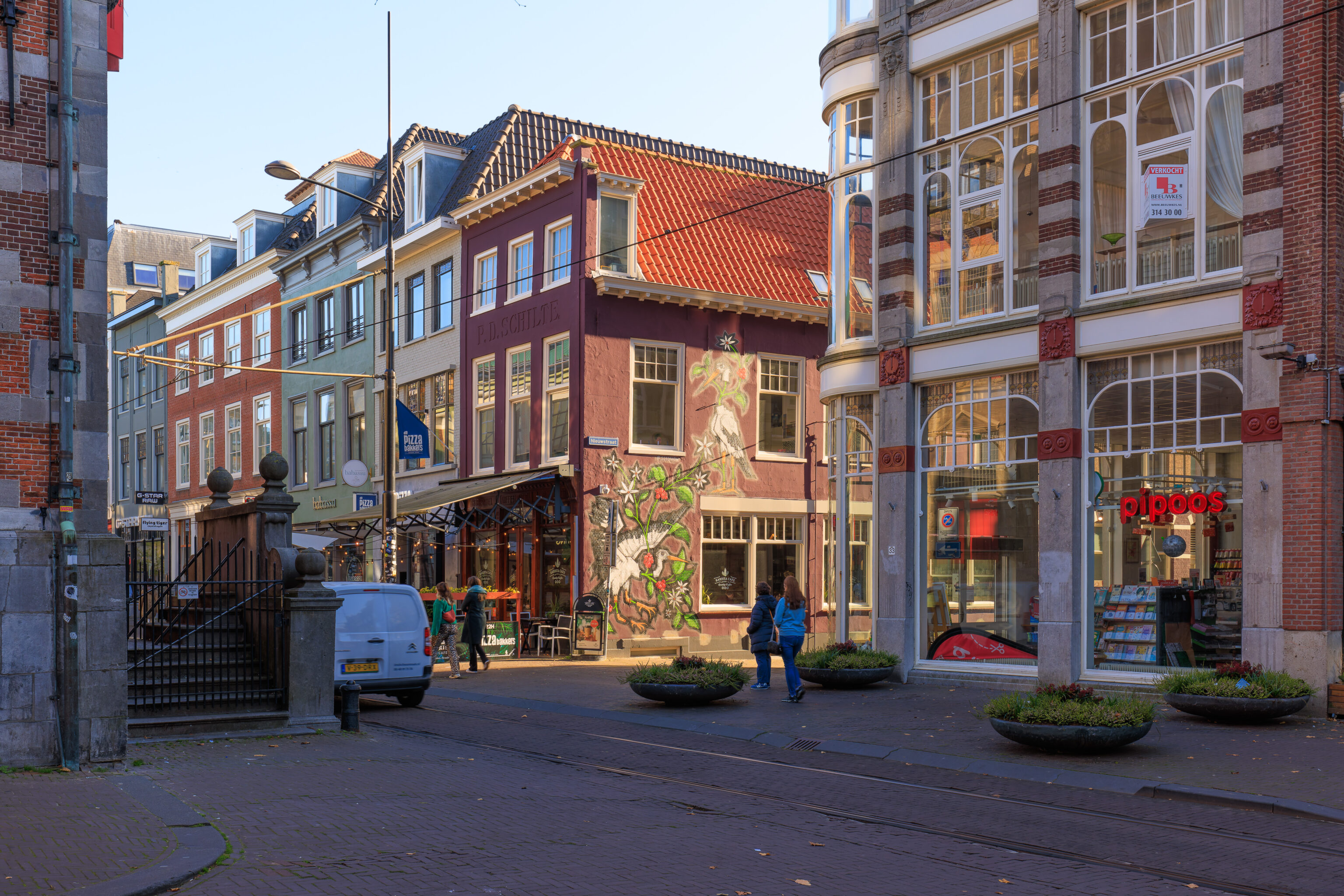
We decided to walk around the church building. We came across a mural of a heron-like bird on the side of a building.

The Oude Stadhuis (Old City Hall) is next to the church.

We noticed the coat of arms on this building connected to the Old City Hall. It depicts a bird that looks like a heron striking an eel. It is apparently the coat of arms of The Hague! And, the bird depicted is actually a stork!

There was a Christmas present structure next to the church. Also visible here, an outdoor urinal on the very right edge of the photo. This specific one is apparently a telescopic urinal invented by the Dutch.

Tram tracks run through a nice little bit of grass next to the churhc.

The far side of the patch of grass allowed fora more distant view of the church.

There was still more than an hour until our timed entry for the Mauritshuis. We decided to go check out the exterior of the Paleis Noordeinde, one of three current palaces used by the Dutch royal family and the King’s official workplace.
We came across this decoration above a street on the way. We’ll be sure to have a royal winter, whatever that means!

An array of crowns on the ground.

As we got closer to the palace, we noticed a small sign showing a stork striking an eel in Delftware style. The crown depicted above is the same style of crown that we saw on the ground.



The entrance to the palace is behind a simple fence. There weren’t any visible guards like there are in the UK.


A statue of William of Orange stands in front of the palace. A plaque on the ground reads:
This bronze statue of William of Orange astride his horse is the oldest freestanding statue in The Hague and was unveiled in 1845. It shows the prince as a general in armor wielding a marshal's baton.
This seems to be the older William of Orange (1533-1584). Dutch history seems to be rather complicated and very intertwined with the rest of Europe, however, he seems to be the first of the House of Orange-Nassau which is the current Dutch royal family. A subsequent William of Orange (1650-1702) turns to be the William of William and Mary, the King and Queen that ruled the UK together.
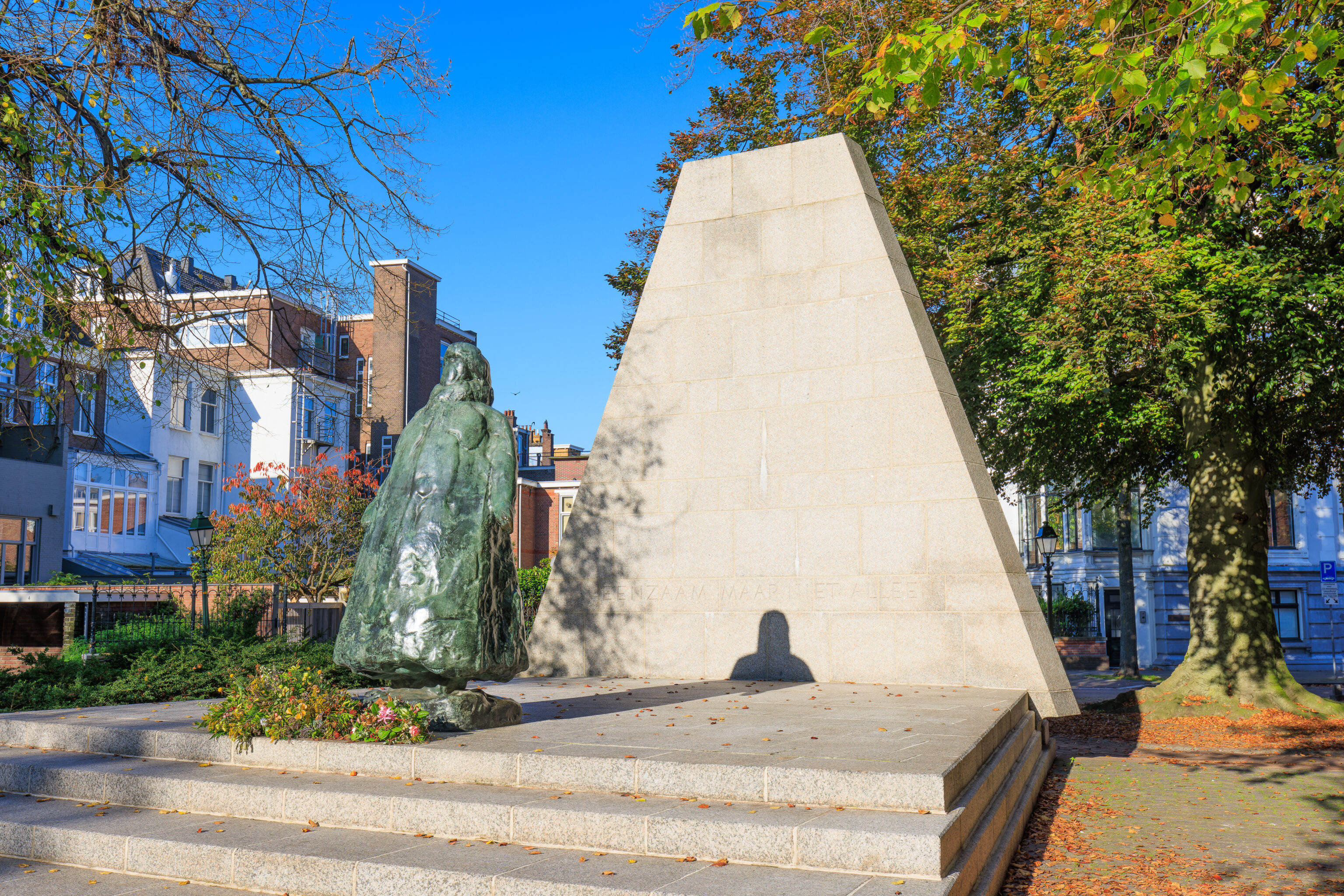
As we started to make our way towards the Mauritshuis, we came across this statue of Queen Wilhelmina, the longest reigning Dutch monarch, nearby. There is also a line of peppermints, created in 1892 when she was 12, named after her. This statue apparently looks better if viewed from the other side facing the Queen.
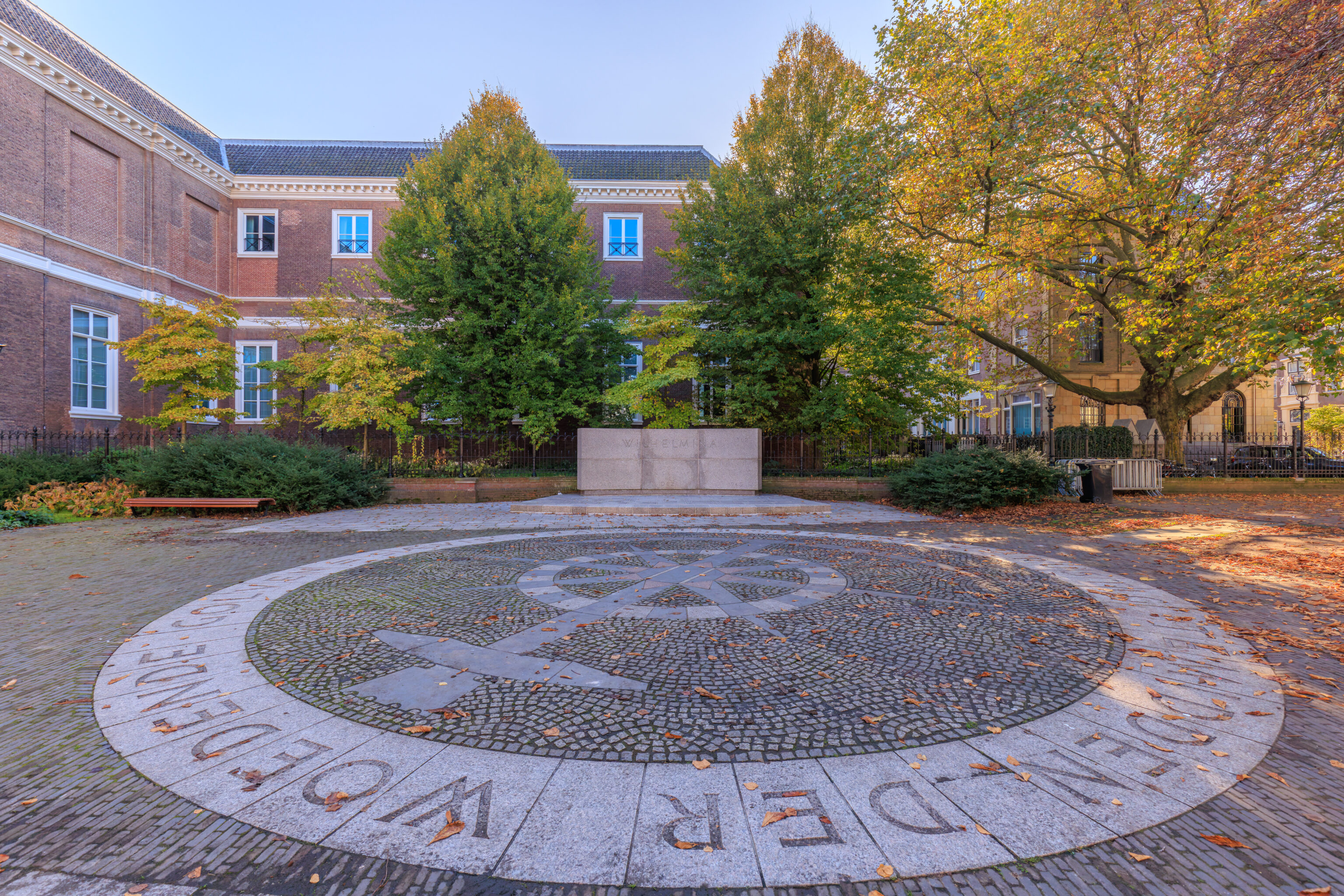
The view from the statue looking in the opposite direction.
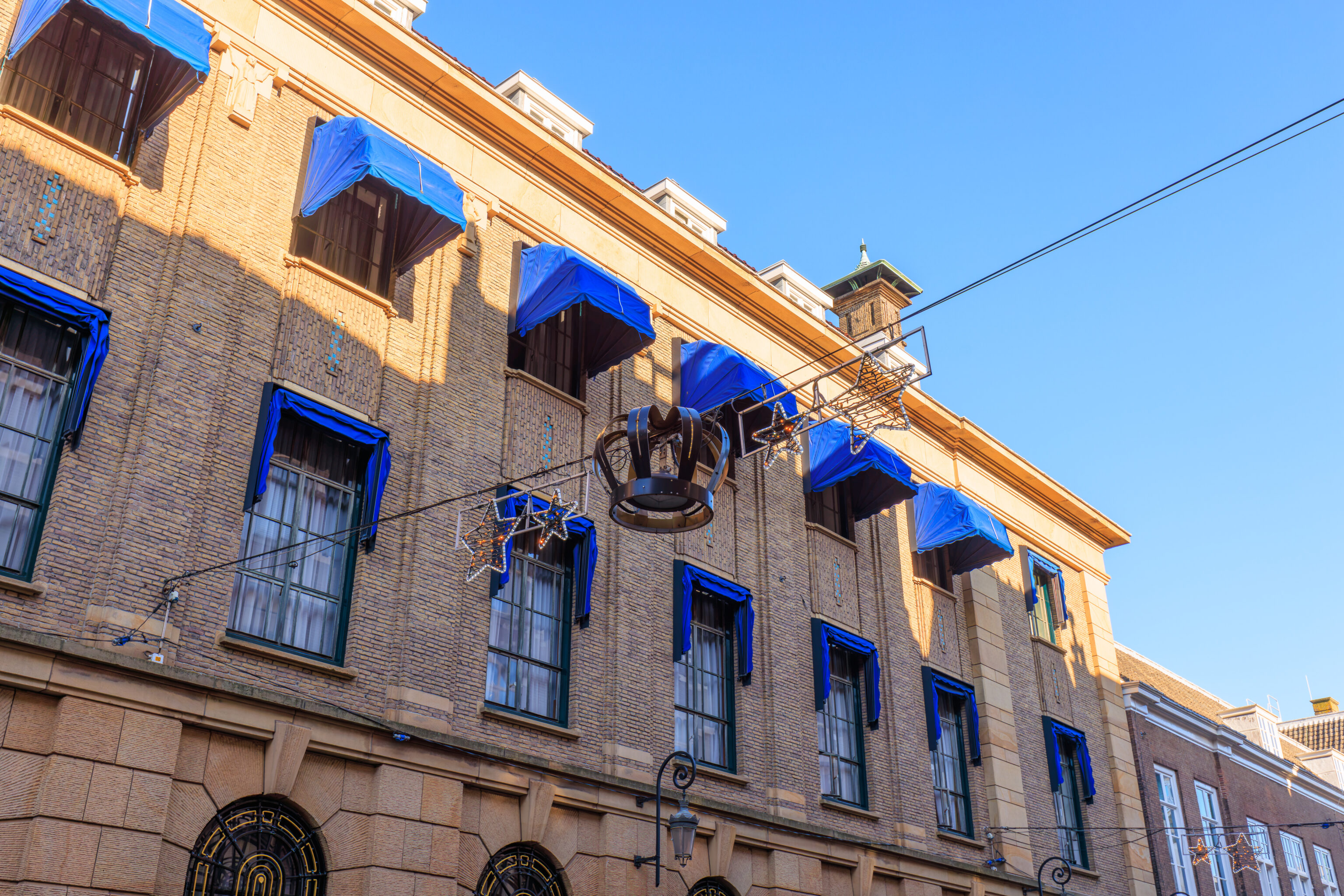
We passed by a three dimensional crown above.

This shop had a Delftware display in its windows.

We came across this statue of Johan de Witt at the western corner of the Hofvijver. We decided we needed a snack and headed to the herring stand that we saw earlier next to the Uitzichtpunt Binnenhof.


We decided to get herring on bread, kibbeling, and a shrimp croket from Haringkraam Buitenhof. All of the items were excellent! We ate the at the stand as the gulls will try to steal your food if you eat outside!

After snacking, we continued back around the Hofvijver.

We got a stroopwafel from Stroopwafel King at the western end of the market by the Hofvijver. It was very filled with stroop (syrup, typically caramel)! We’ve come across quite a range in prices for stroopwafels, from €2 to €10! This one was €3.

We could see our destination, the Mauritshuis, from near the northern corner of the Hofvijver.

We still had about 20 minutes before our 12:15pm entry time. So, we decided to sit on a bench on the eastern edge of the Hofvijver.
Mauritshuis

The Mauritshuis (Maurice House), as seen from the entrance on the building’s southeastern side. This museum was formerly the residence of Johan Maurits van Nassau-Siegen, a former governor of Dutch Brazil.

The Binnenhof is next to the Mauritshuis.


We picked up a map upon entry showing the layout of the museum as well as a few selected works.
The paintings presented below are in the approximate order that we encountered them in our walk through the museum, though some have been reordered to simplify their presentation here.

One of the first pieces that we noticed and photographed was Still Life with Cheeses, Almonds and Pretzels by Clara Peeters. It is a very realistic still life of food items that is featured on the museum map.
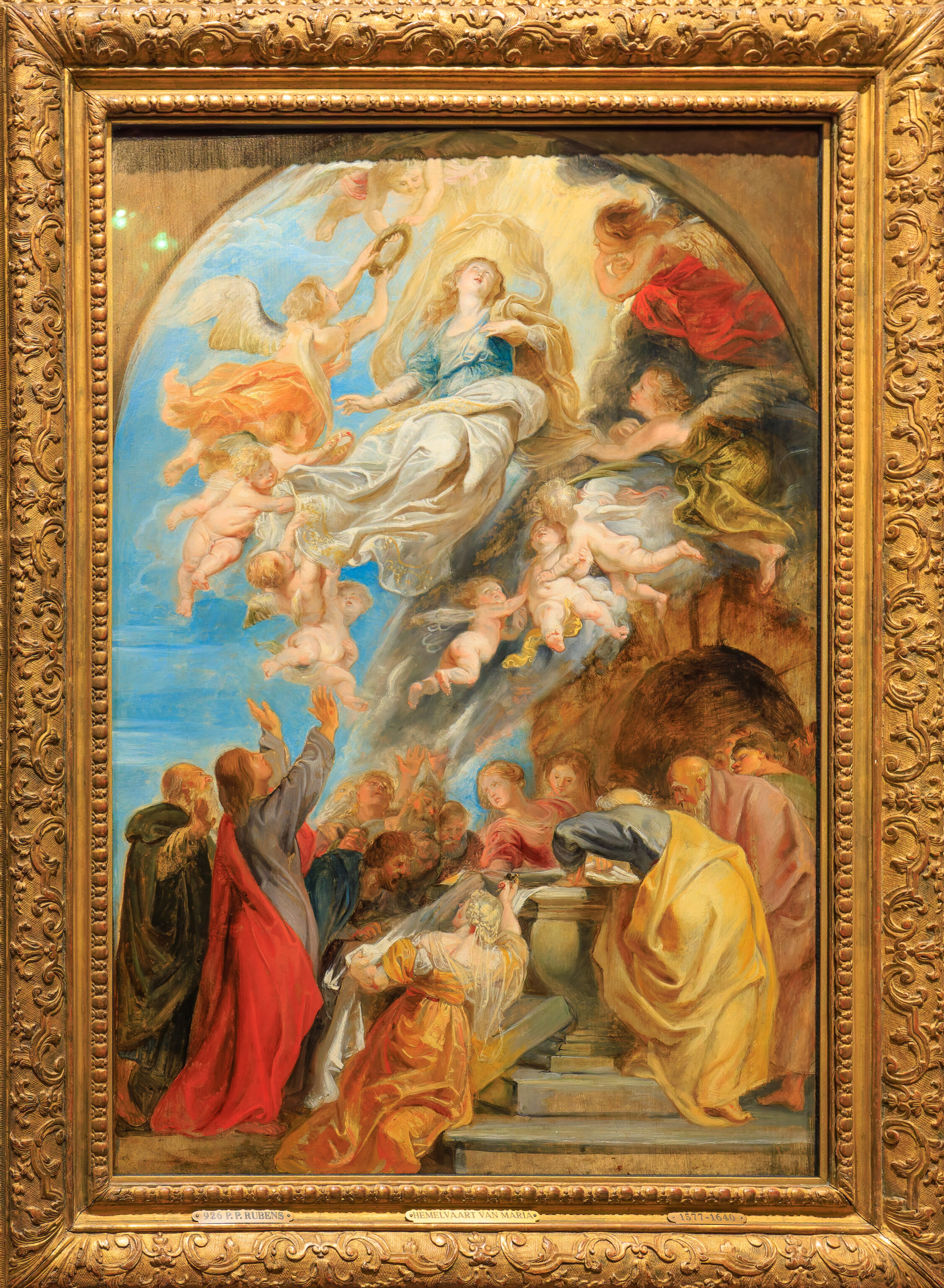
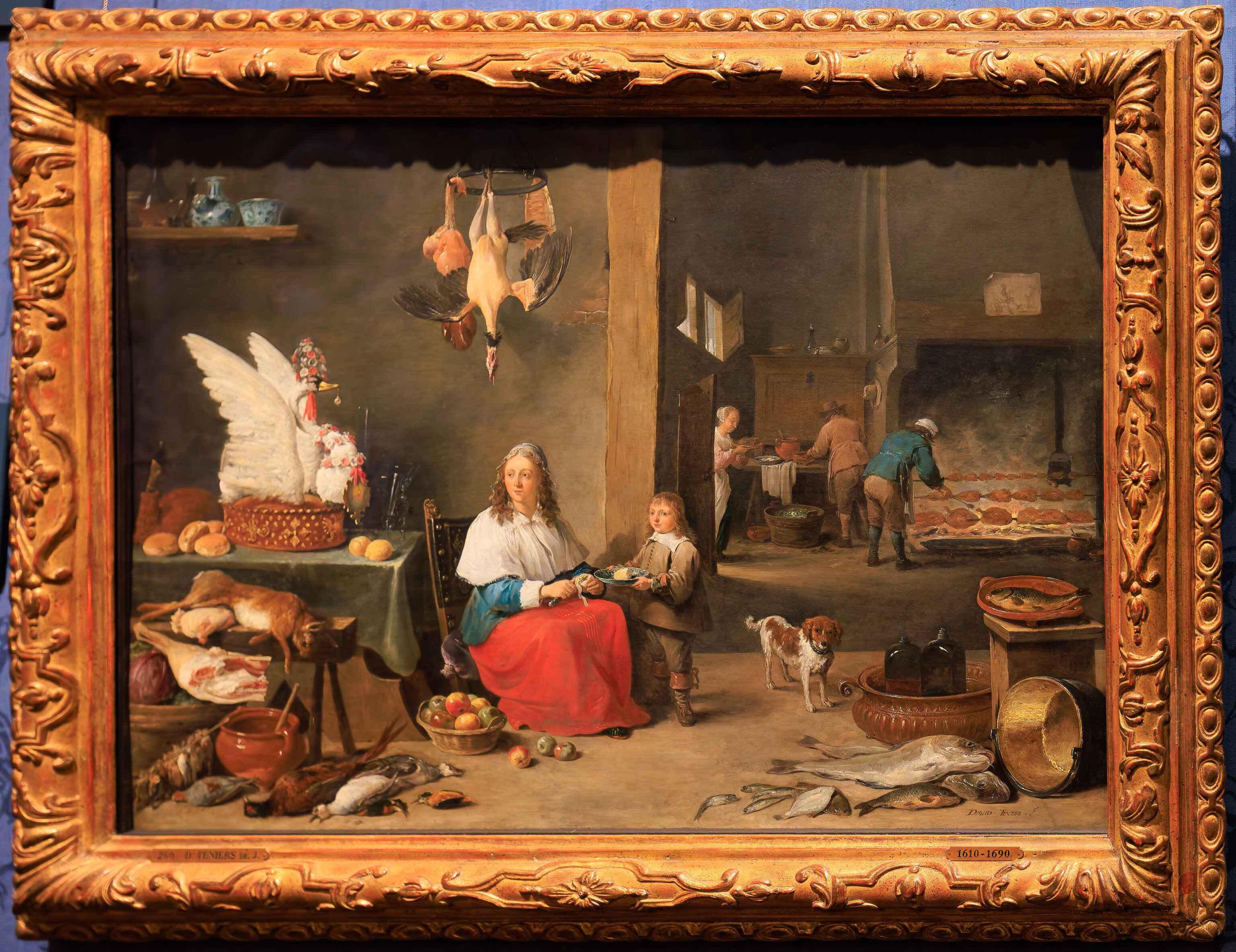
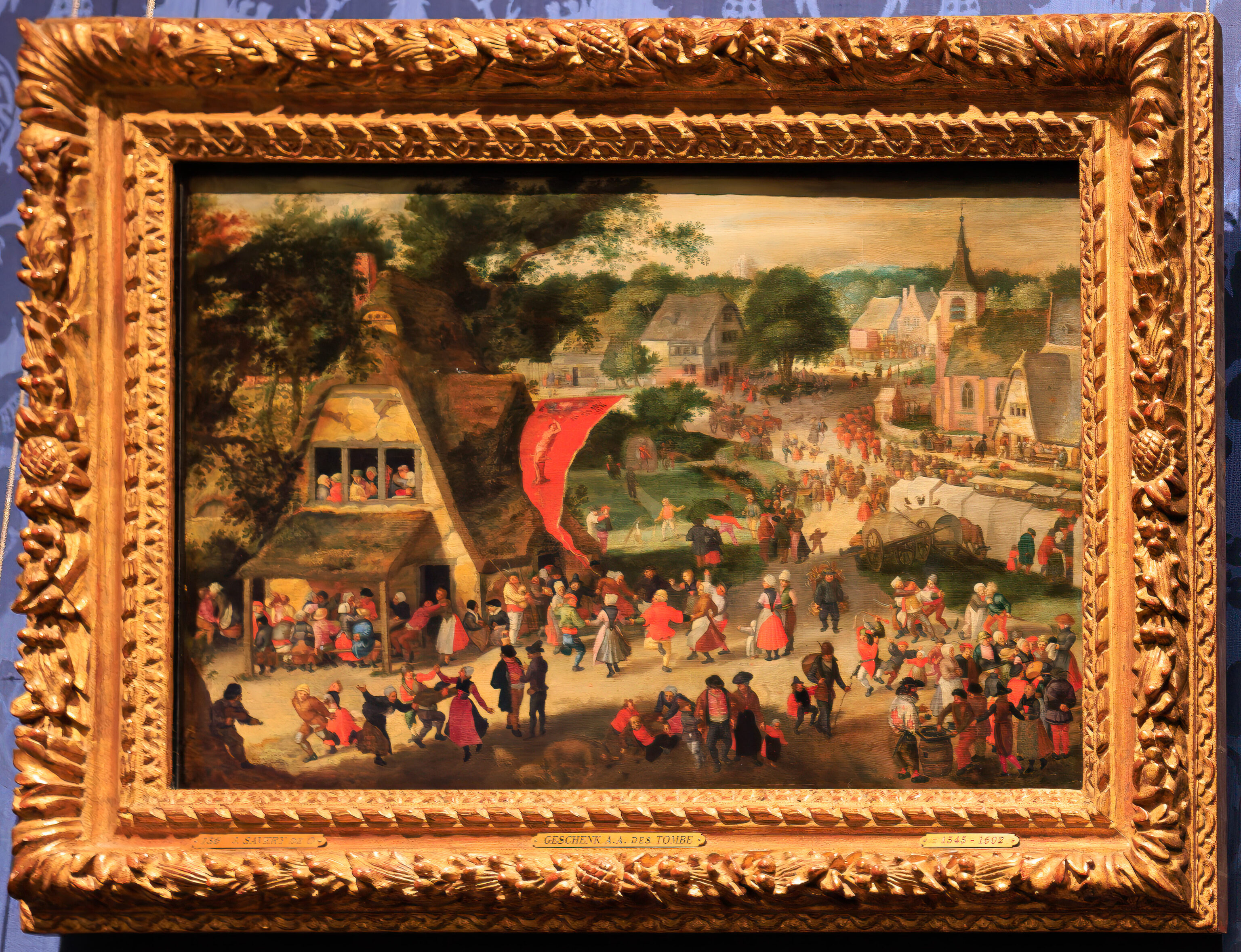

The Mauritshuis is home to many fine works of art from the Dutch Golden Age. We walked through the various galleries

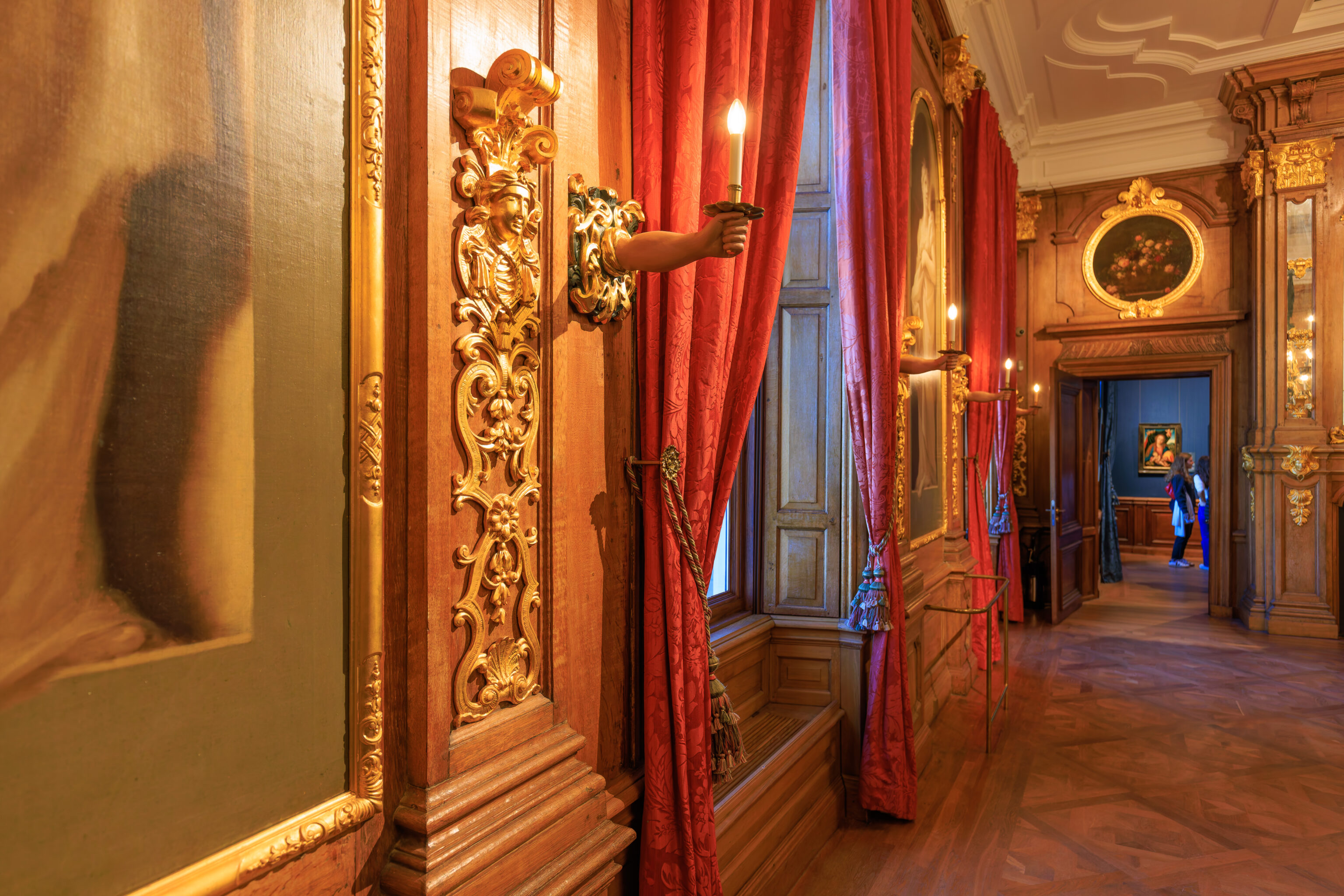
We noticed these arms sticking out of the walls in one of the rooms!

Other than the various framed works, there is also art on the ceiling.
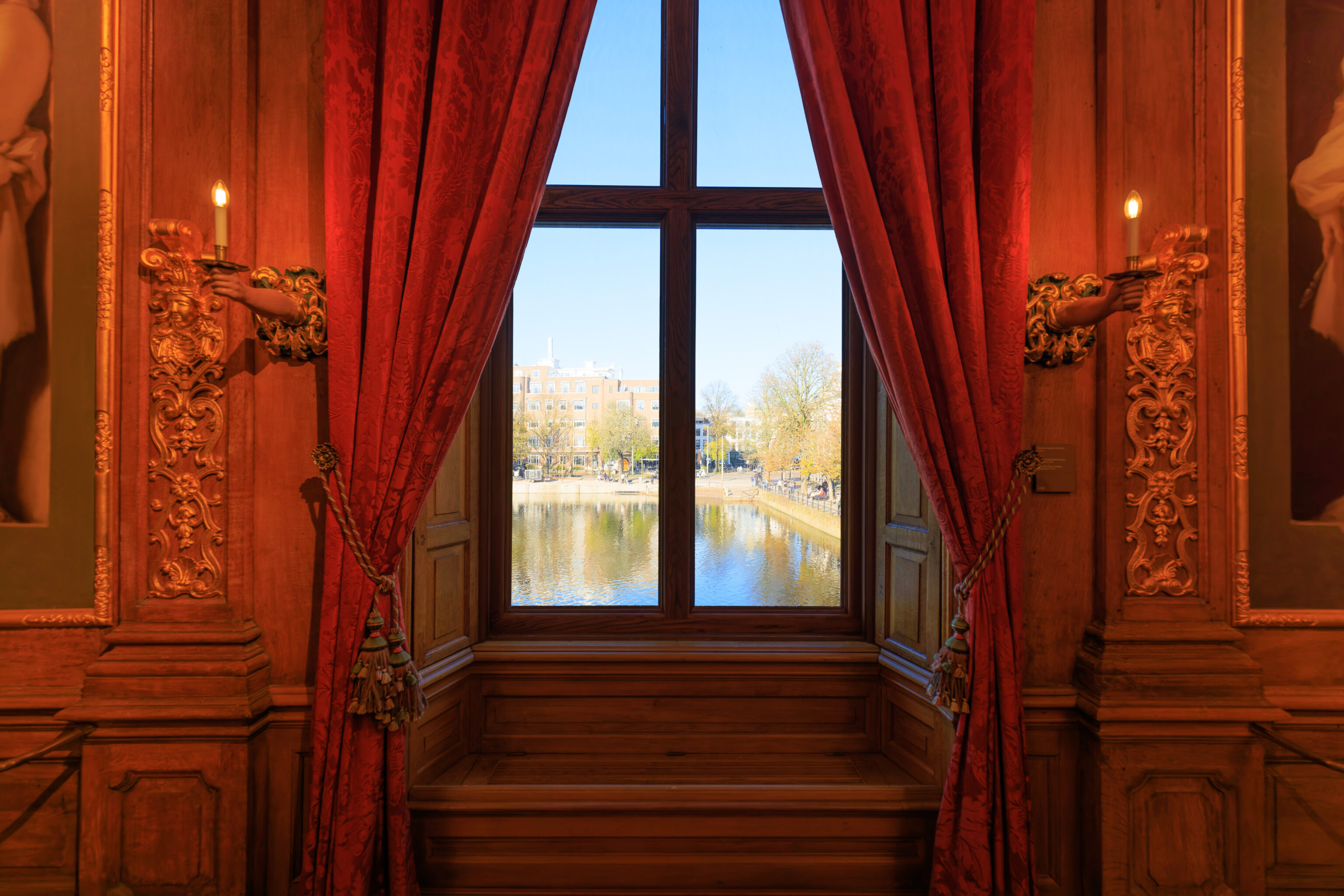
The view from one of the windows.
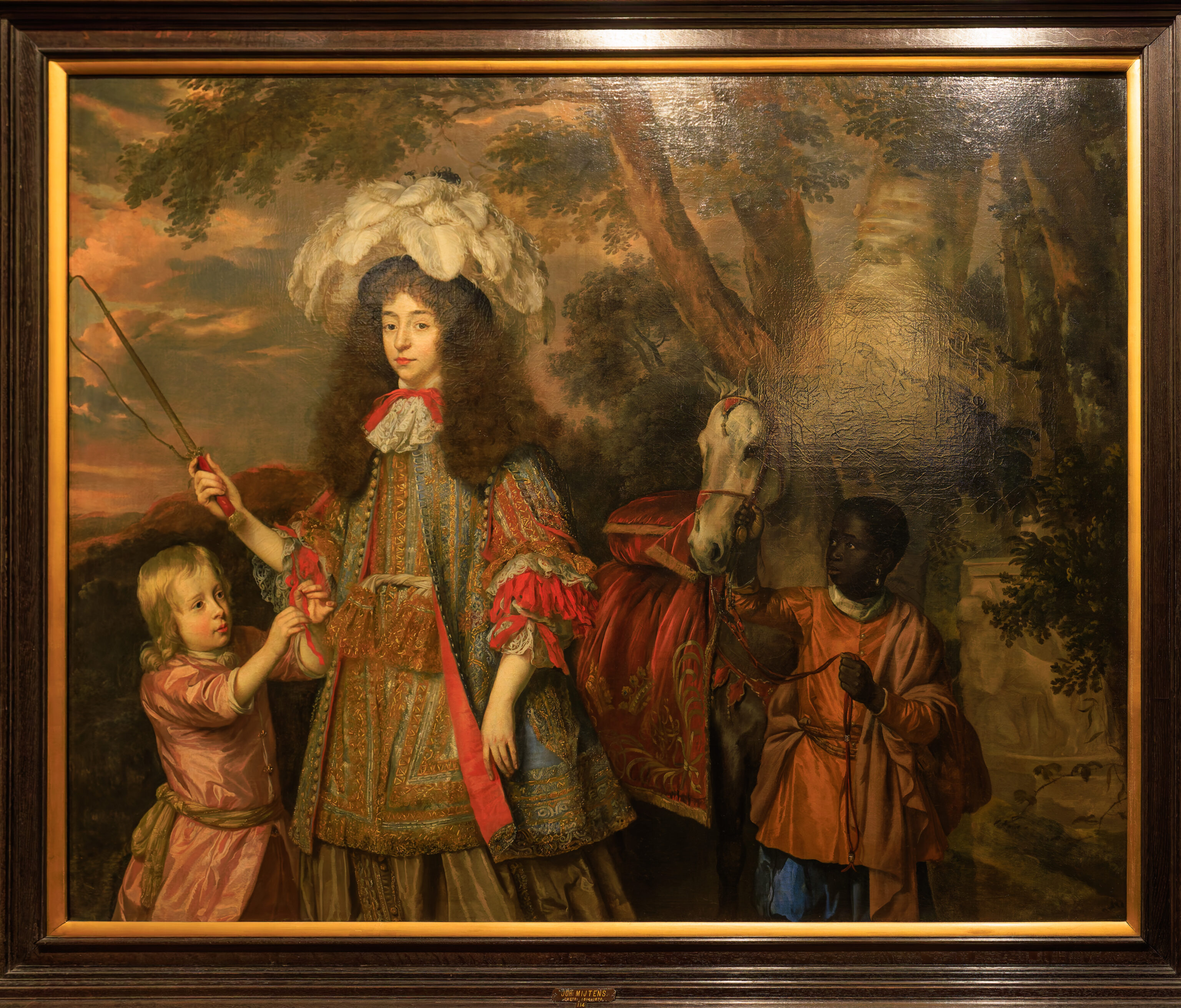


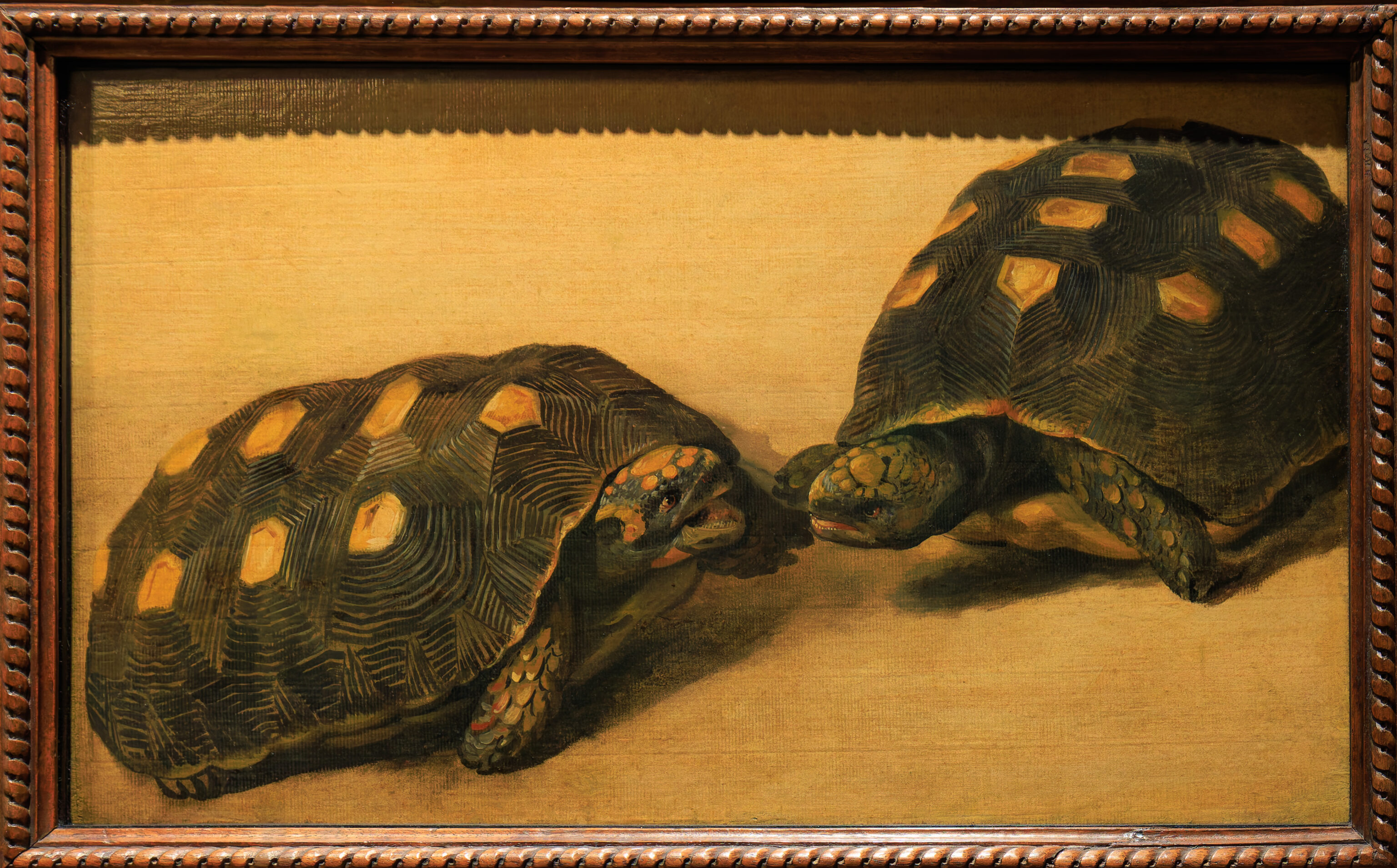

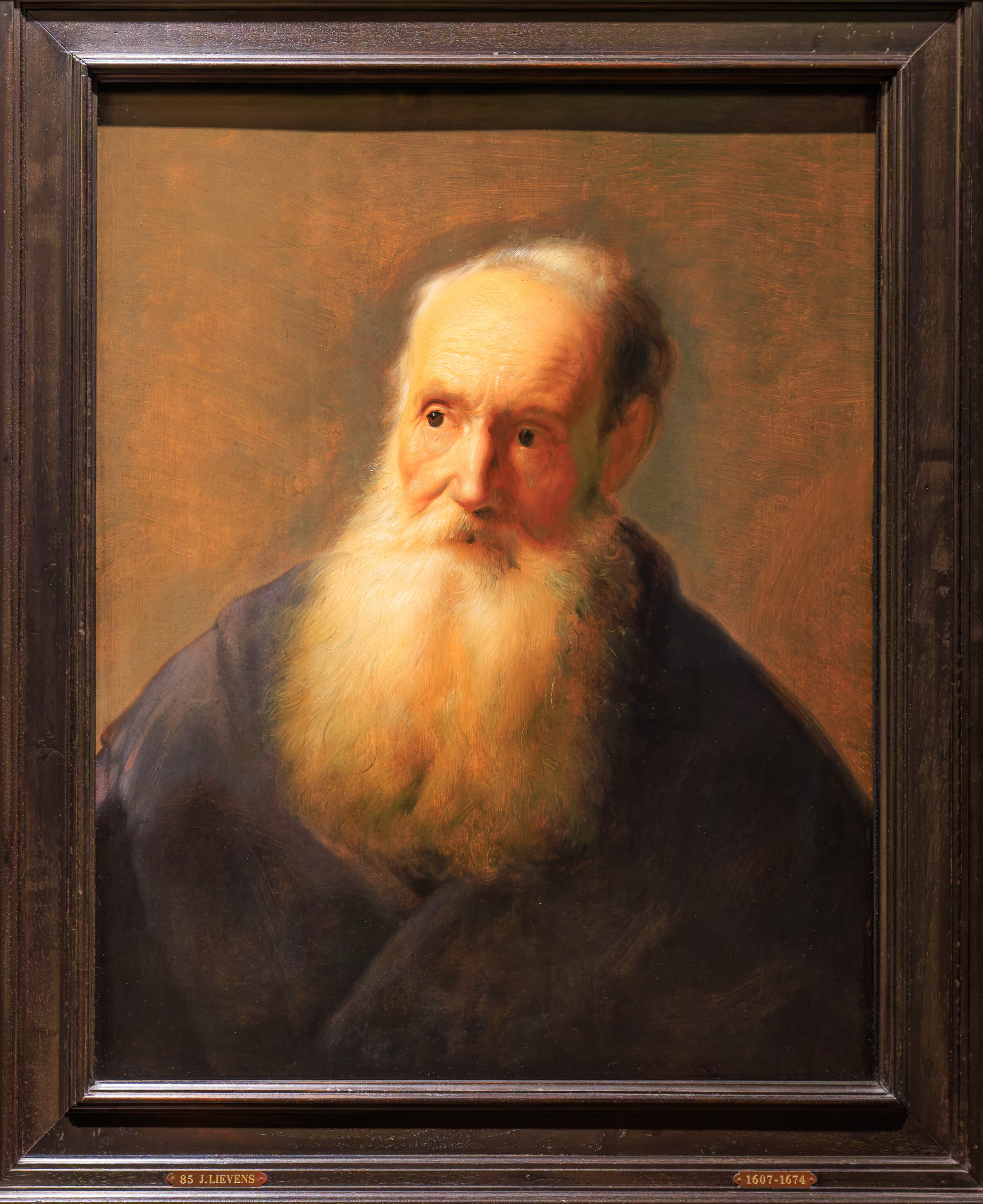
A variety of subjects are depicted in the paintings in the museum.
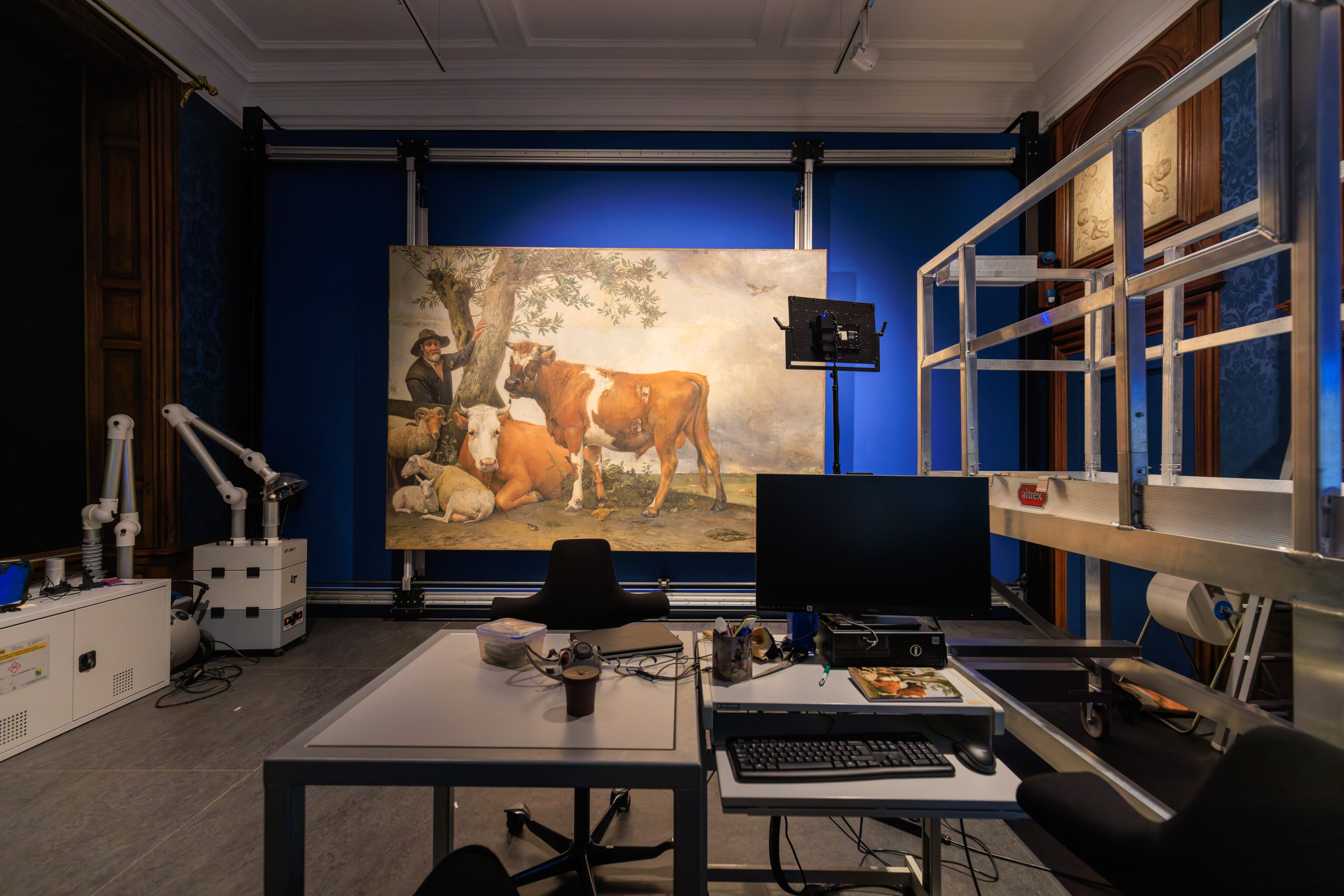
The Bull is described as one of the most famous paintings in the museum and is currently being restored.

The most famous painting is undoubtably Vermeer’s Girl with a Pearl Earring. It was a bit like visiting the Mona Lisa in the Louvre as there was a crowd gathered in front of the painting, though it wasn’t nearly as busy as the Louvre!
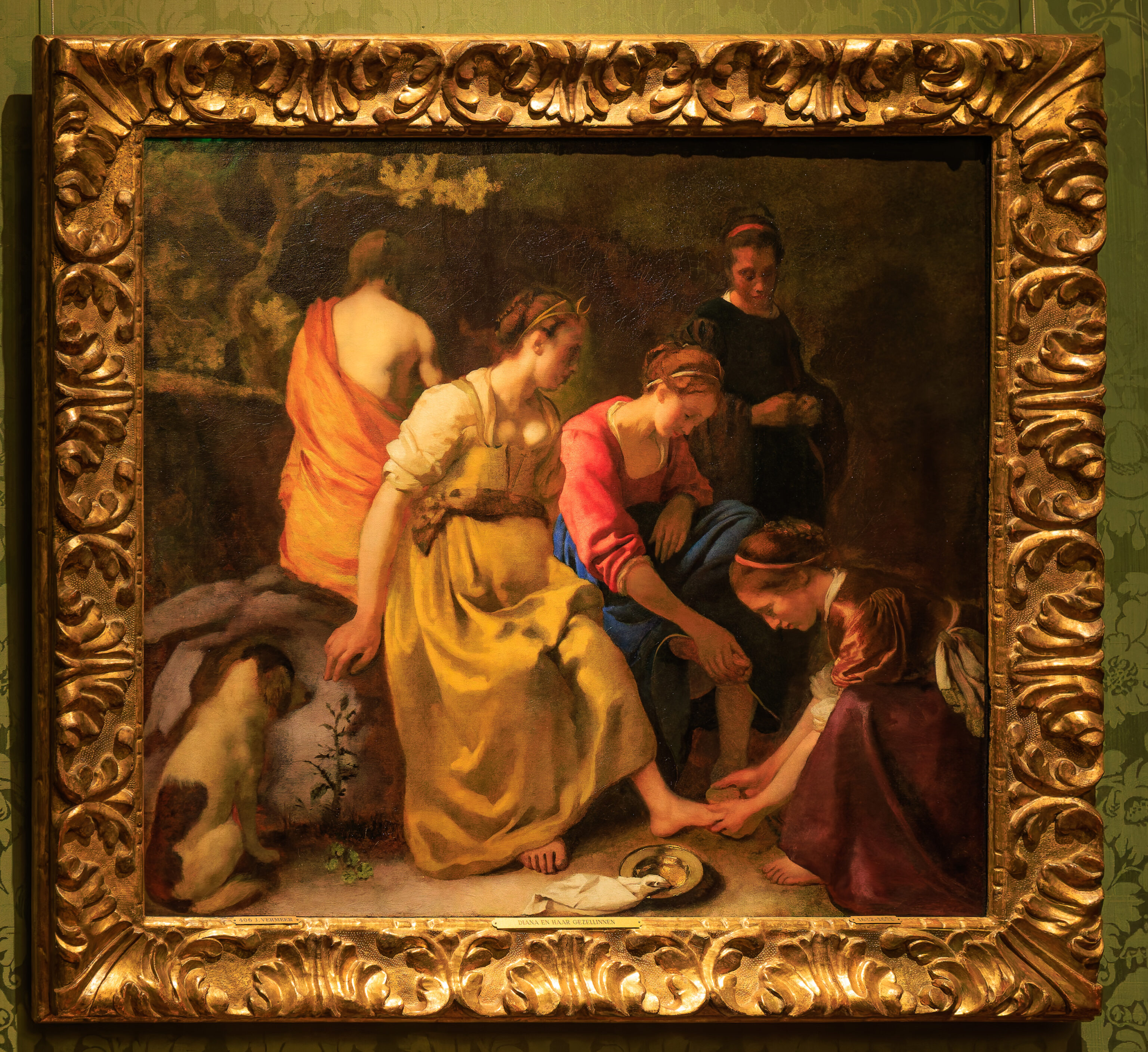
We spotted another painting by Vermeer, Diana and her Nymphs.
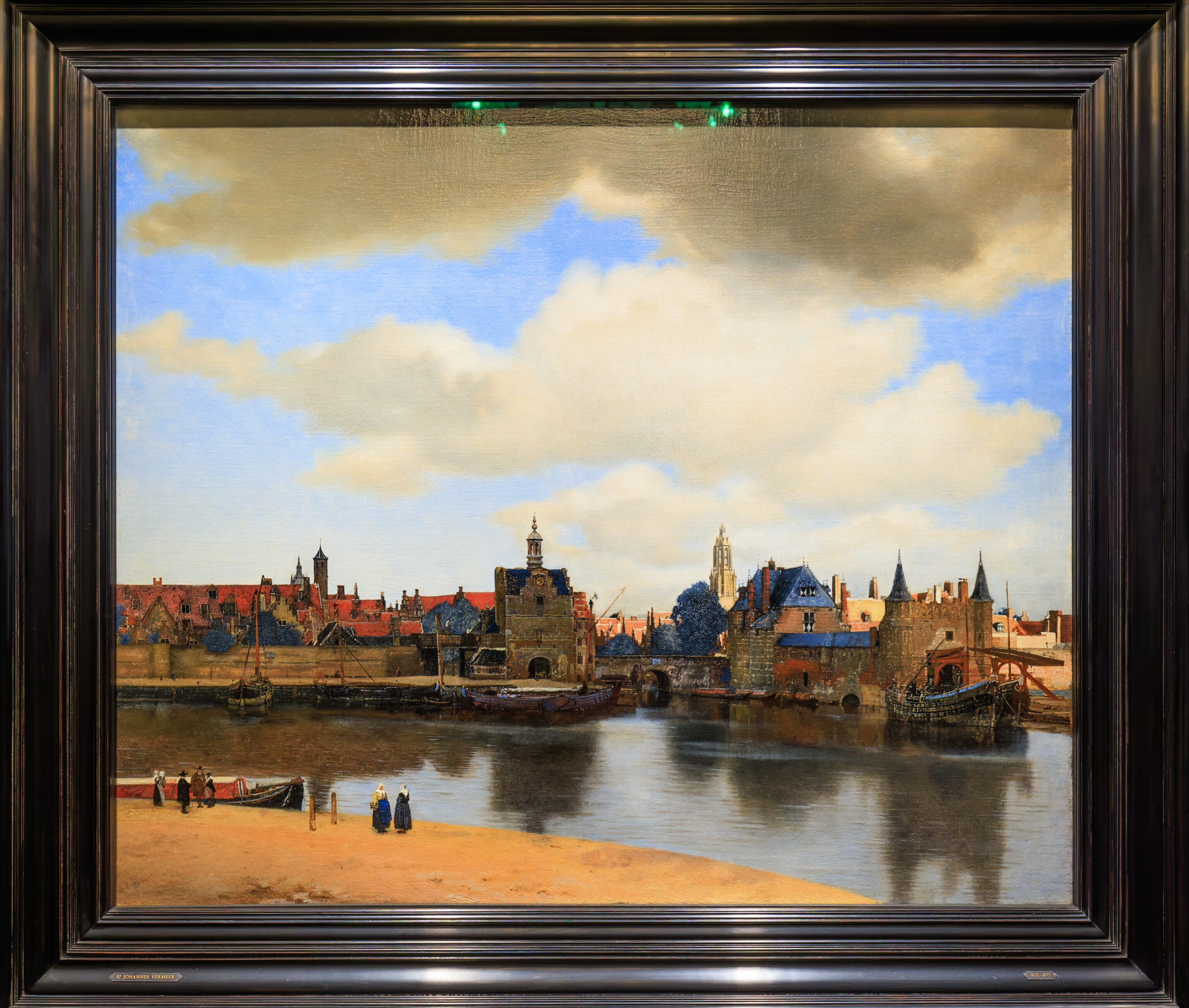
Another painting by Vermeer, View of Delft, depicts the city of Deflt which gives Delftware its name.

It is always interesting to find paintings of places that we’ve been. Unfortunately, while we did visit Utrecht on this trip, we missed going to the Mariakerk as it was a bit further away from the city center. If we had known we were going to see a painting of the church, maybe we would have visited!
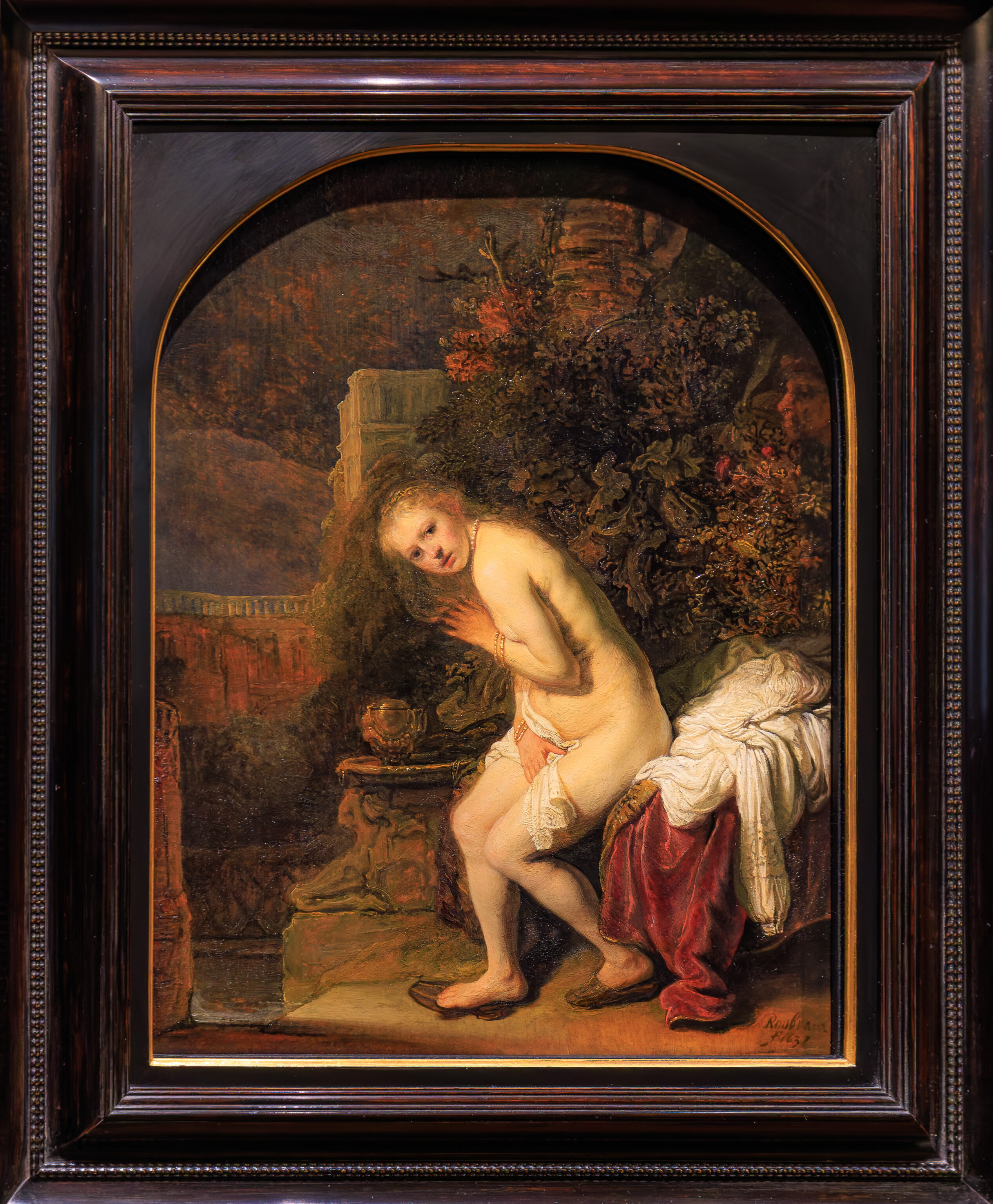
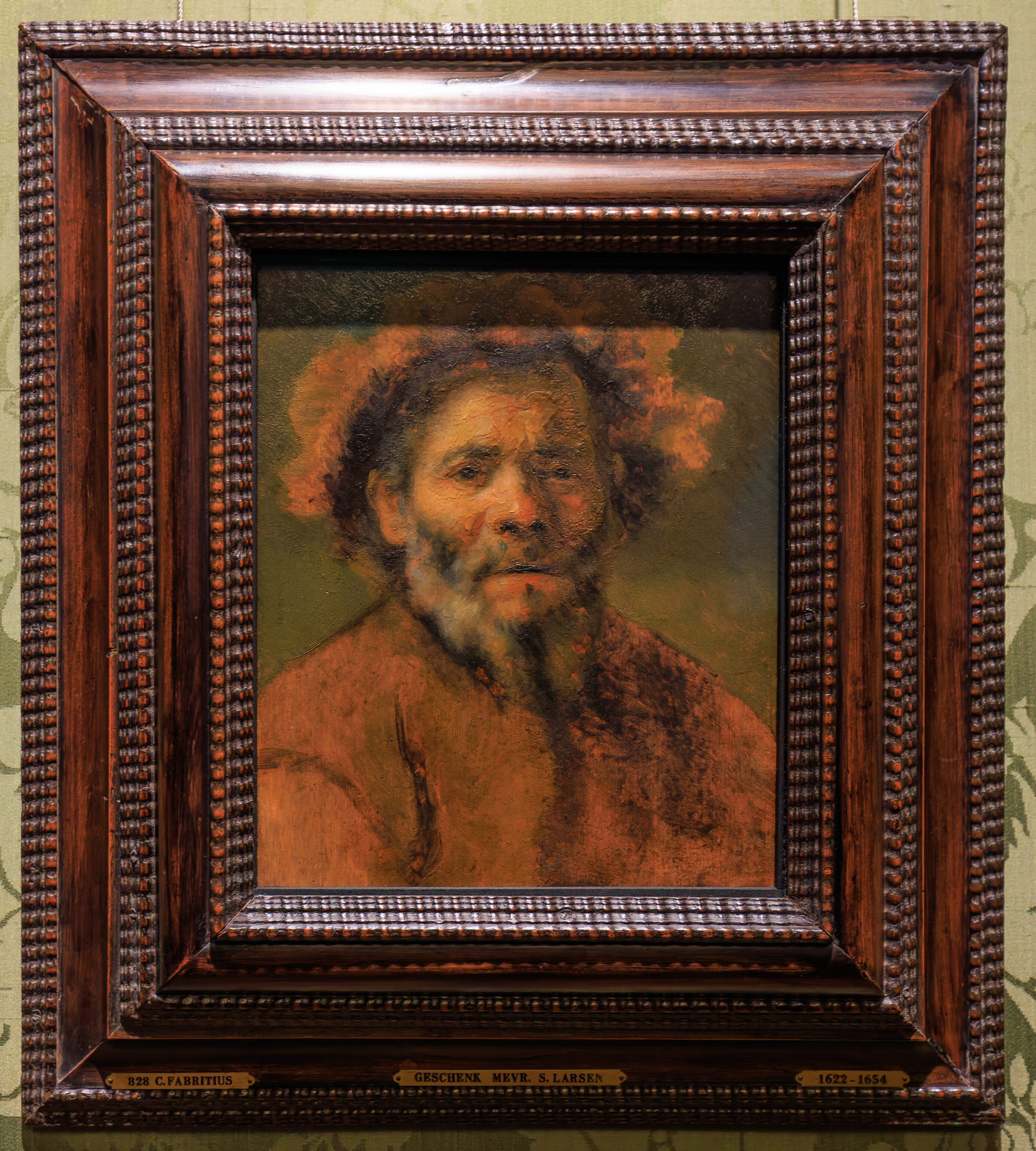
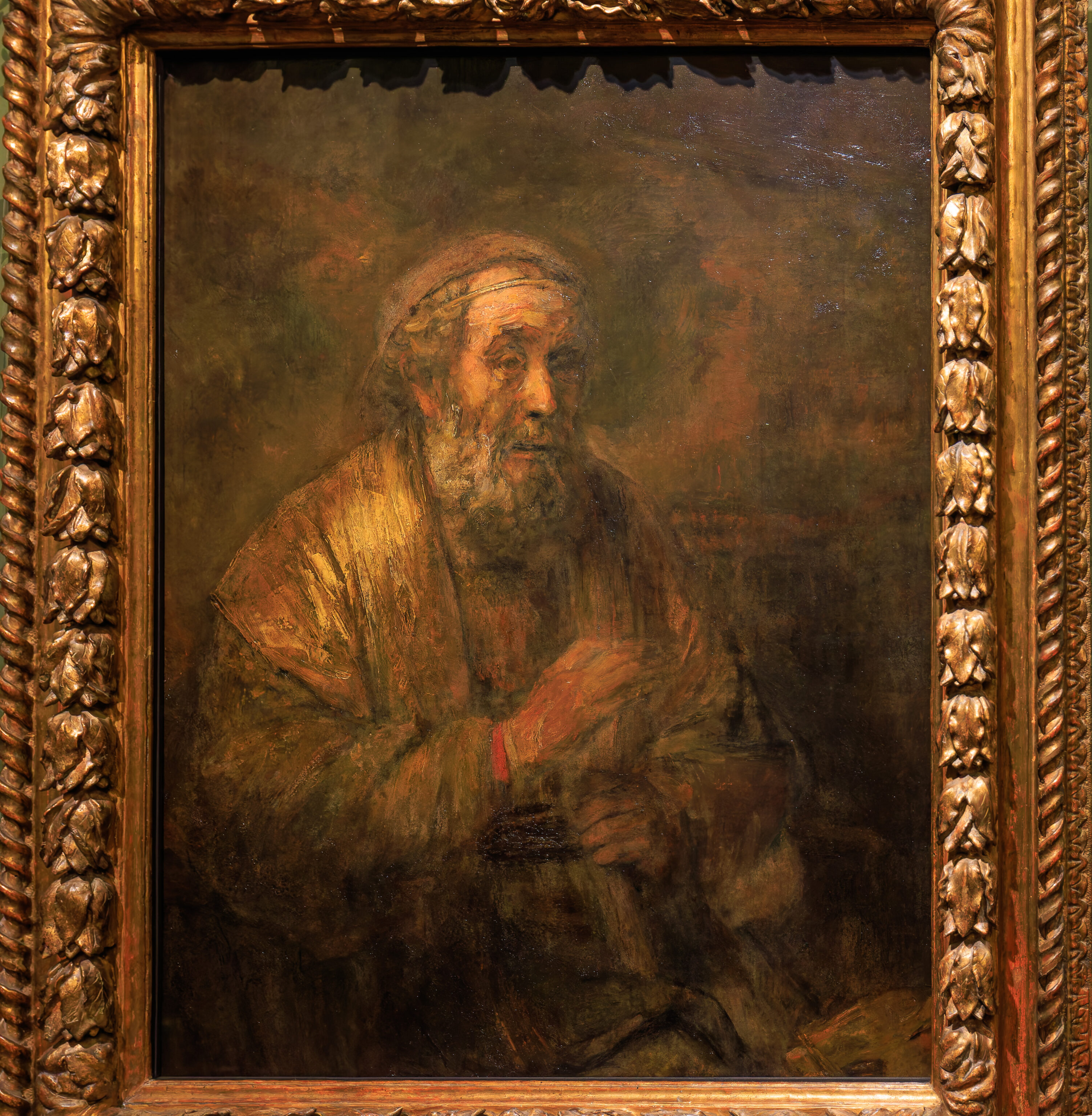

Rembrandt is certainly one of the most famous artists. We came across some of his works here.

This painting, Two African Men by Rembrandt, is featured on the museum map. It is notable for the time as they are the subject of the painting rather than simply present on the side as slaves or servants.
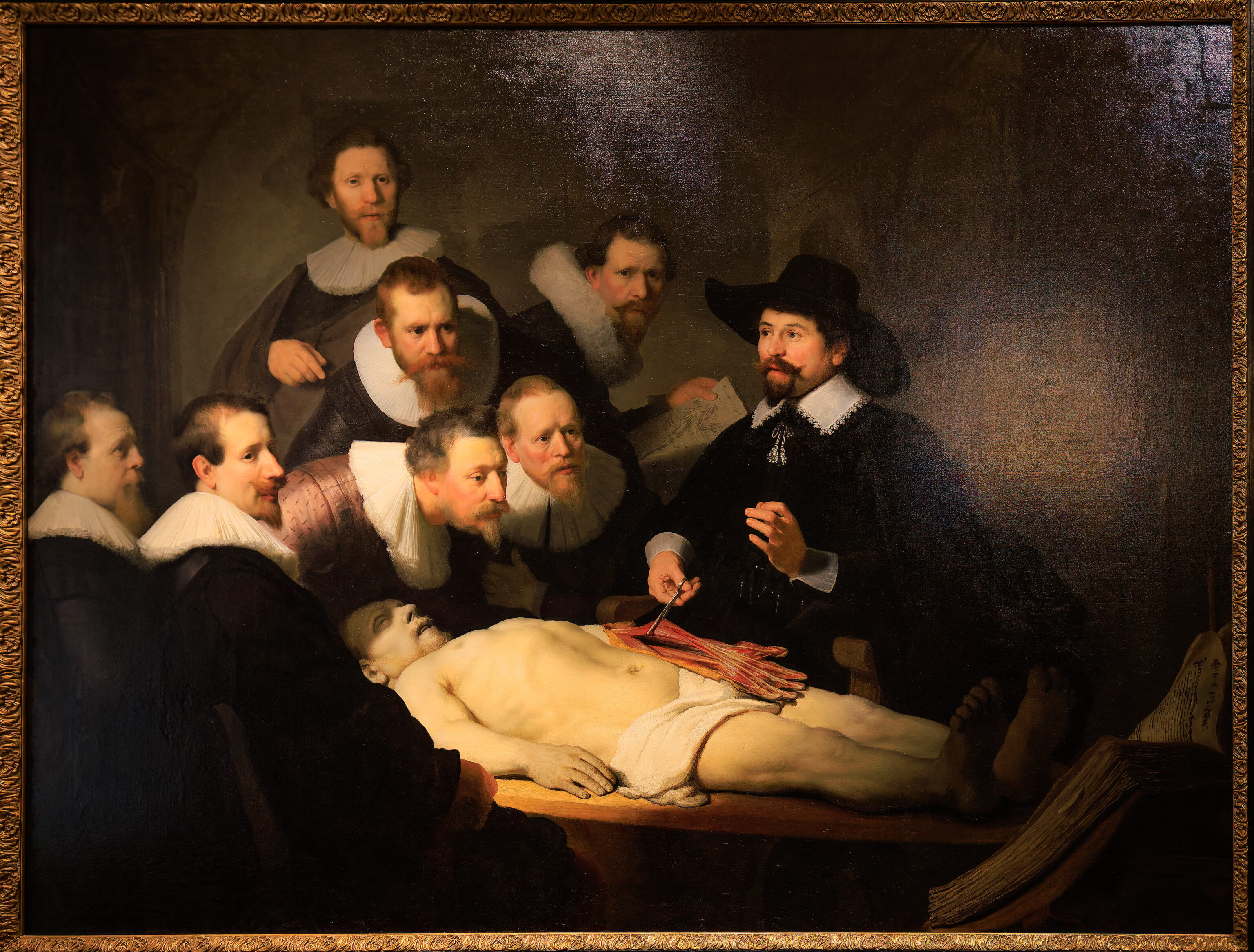
Another Rembrandt, The Anatomy Lesson of Dr Nicolaes Tulp, is also featured on the museum map. This was an early painting by Rembrandt commissioned by Dr. Nicolaes Tulp.

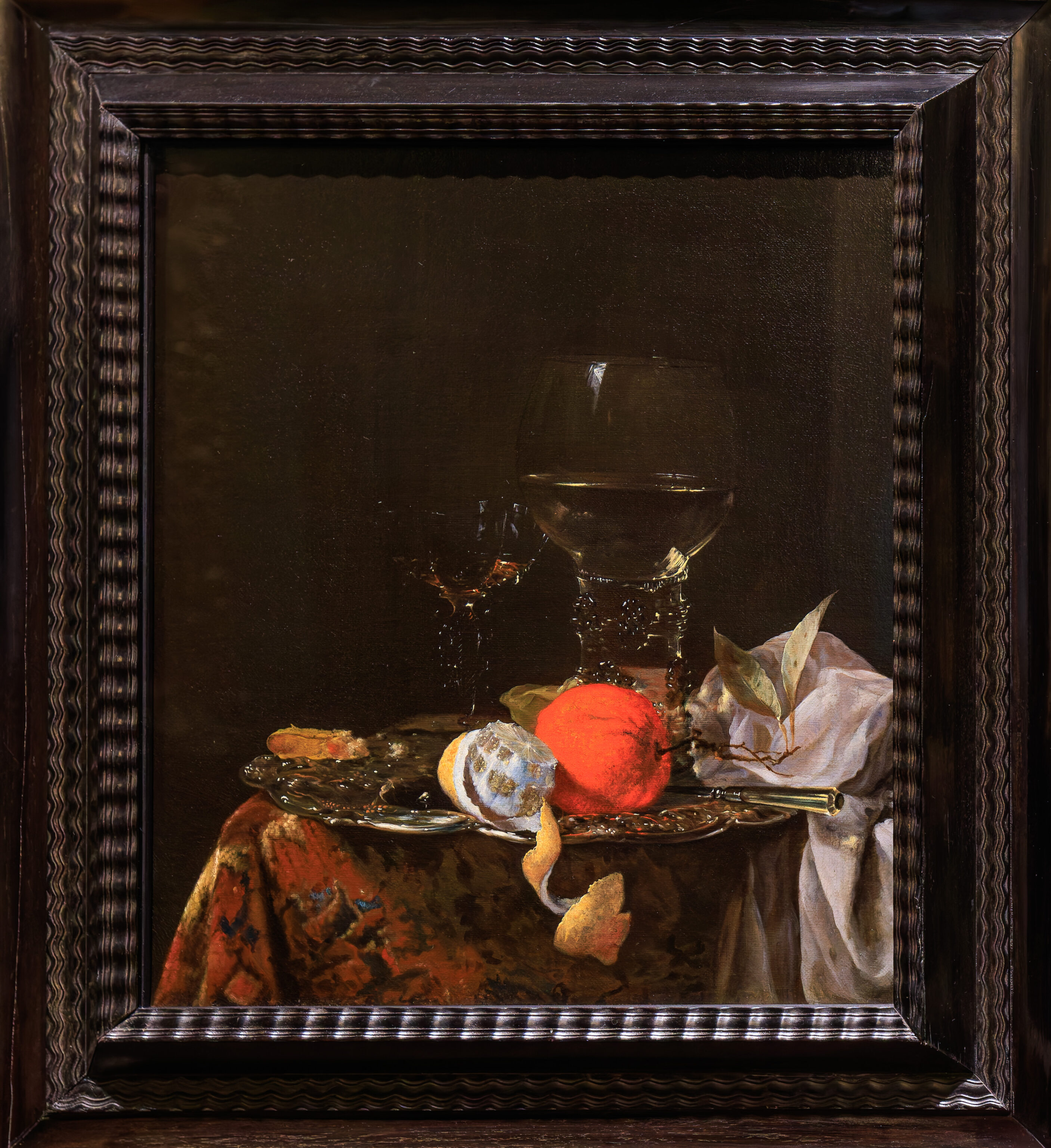


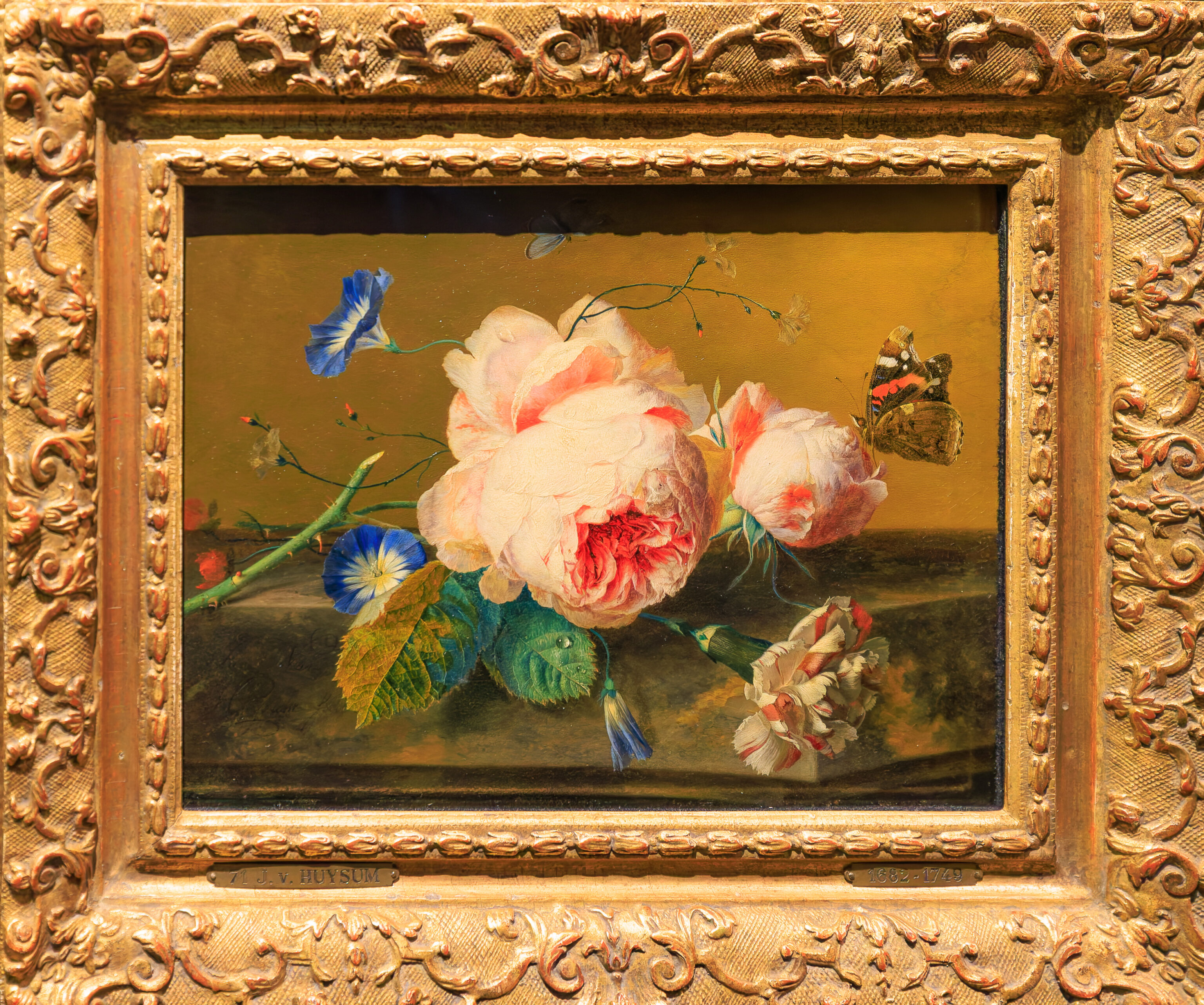
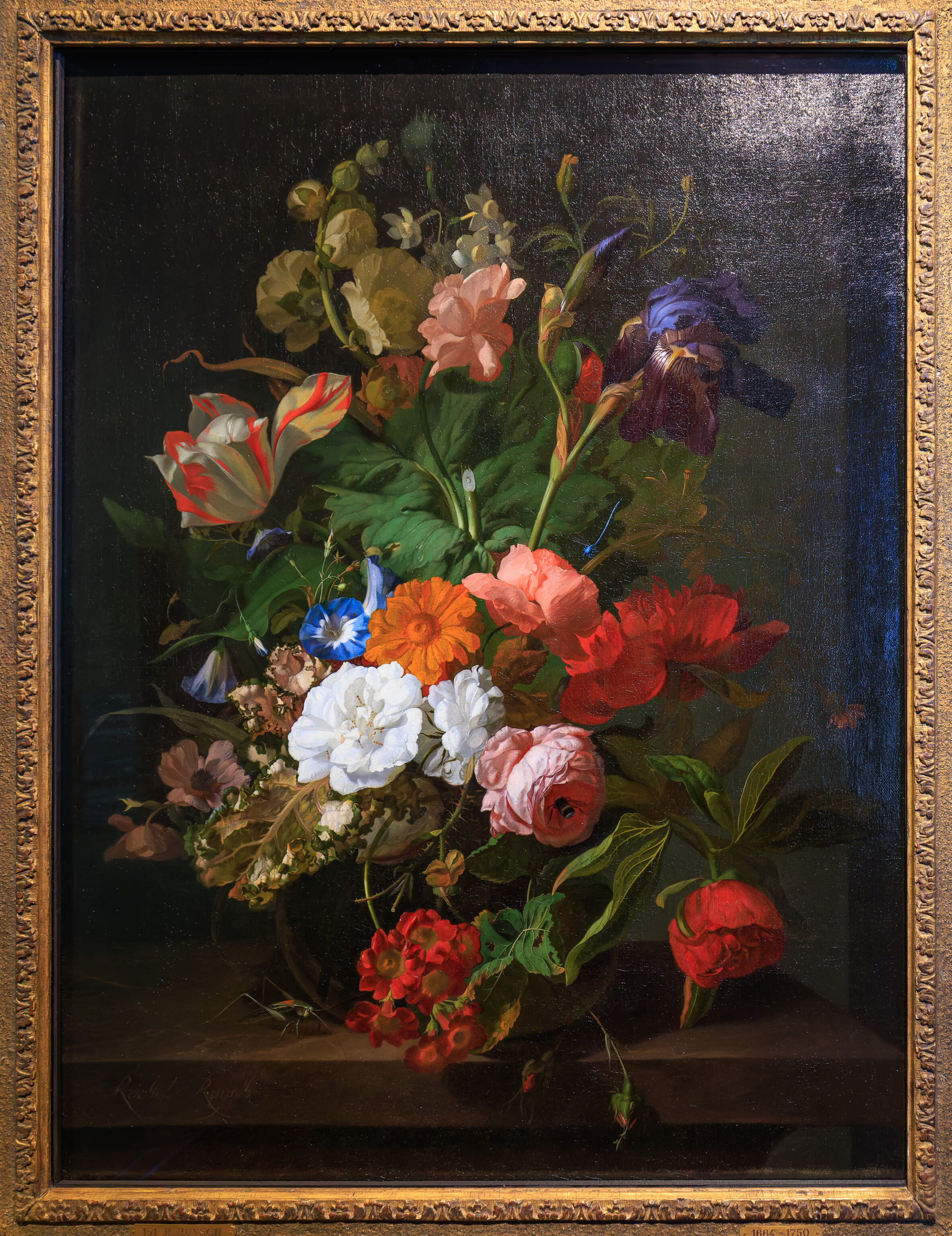



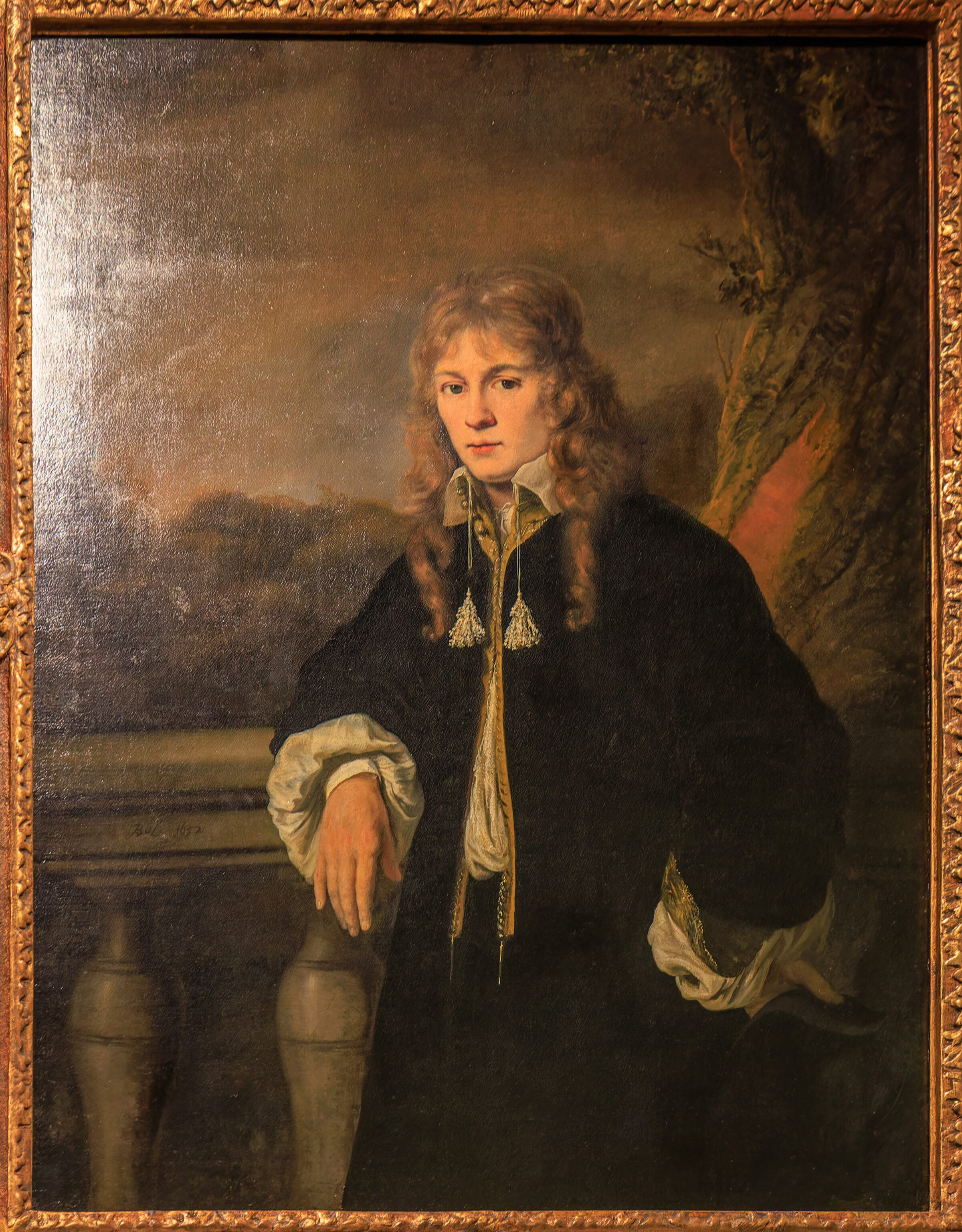
We continued walking through the museum, photographing the paintings that for whatever reason were more attractive than the others.
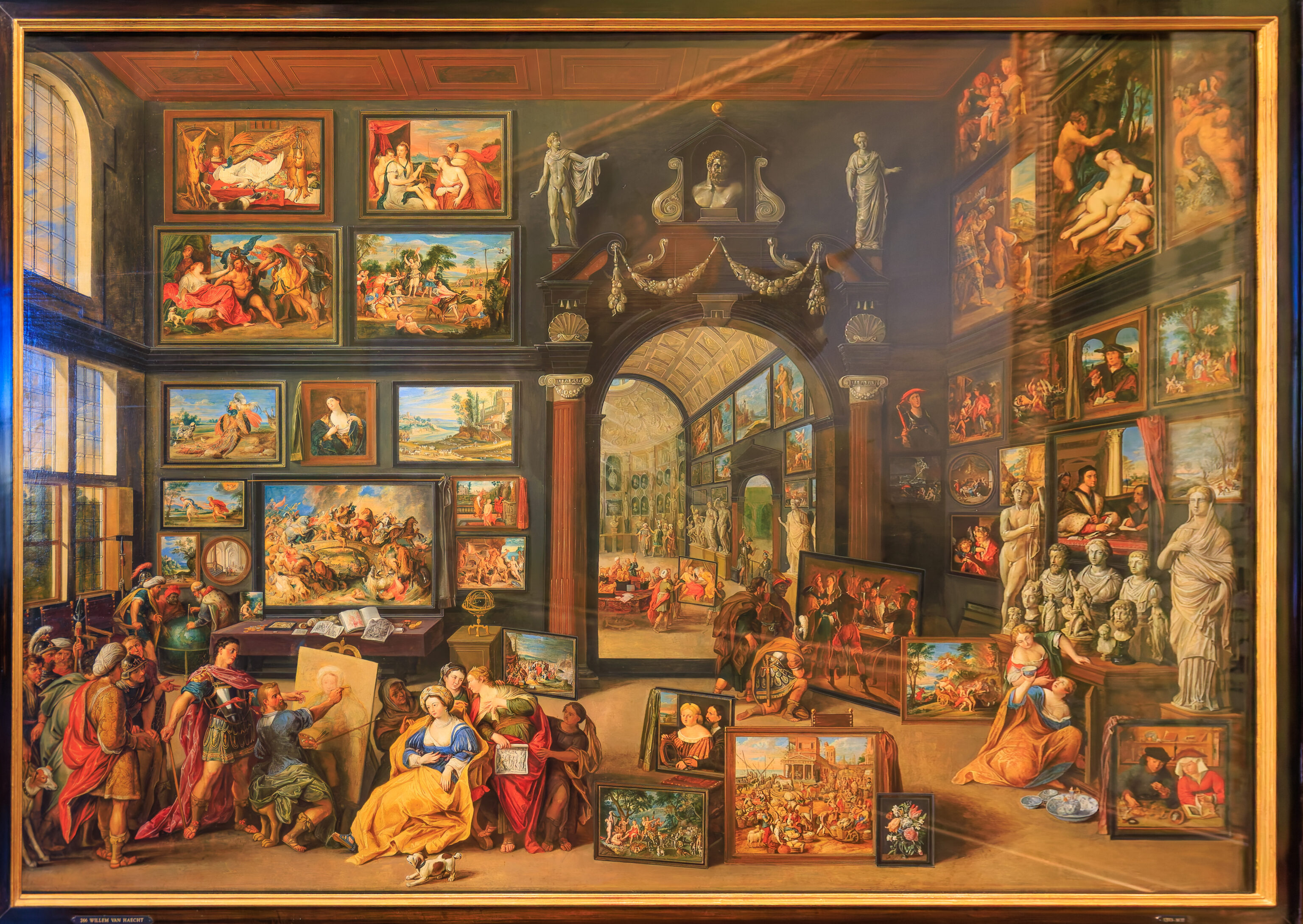
This painting reminded us of one we saw in the Louvre by Giovanni Paolo Panini depicting paintings in a gallery.



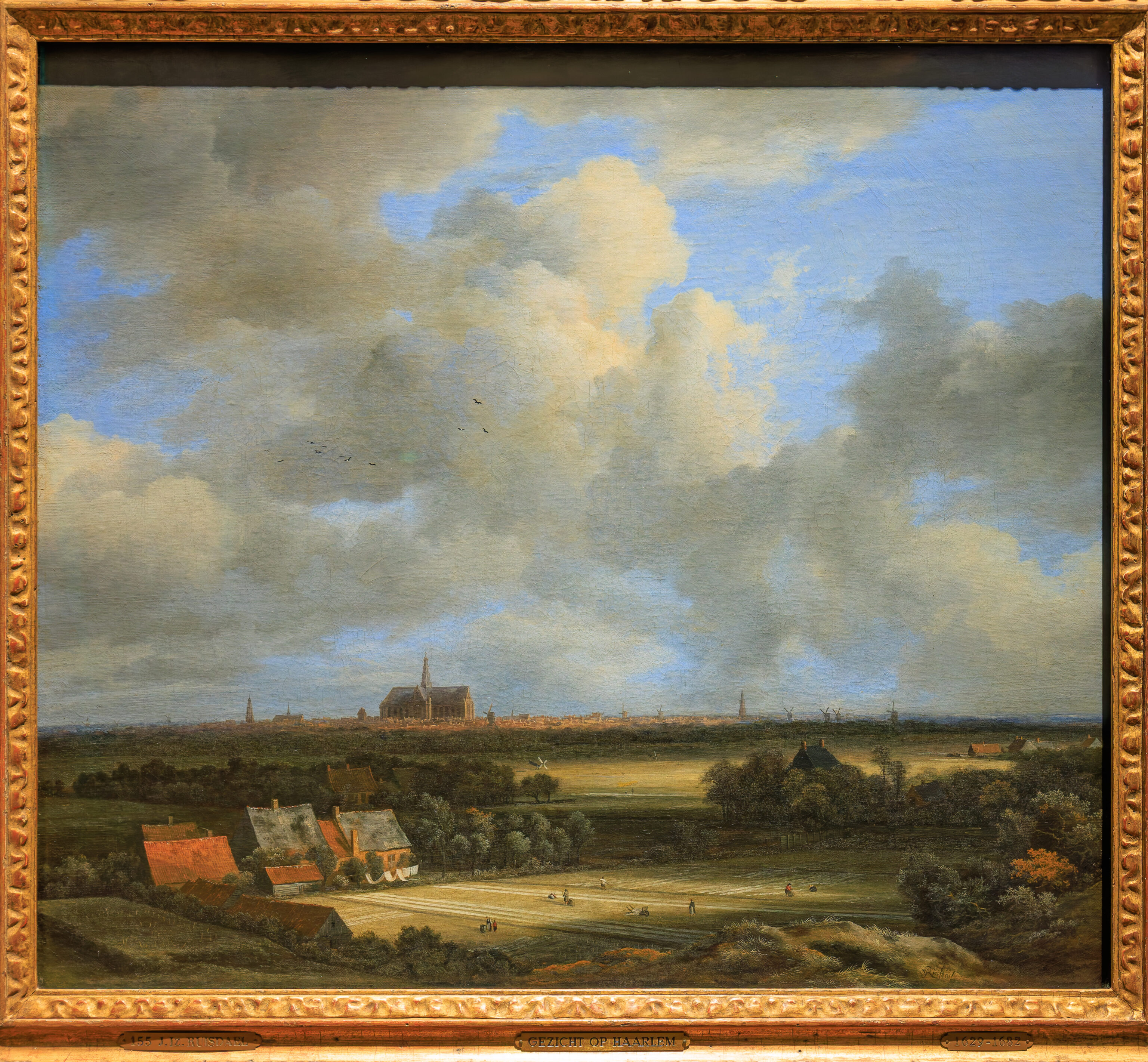
We continued on, passing by some land and seascapes.

These four pieces by Nicolaes Pietersz Berchem are allegories of the four seasons, Spring, Summer, Autumn, and Winter.
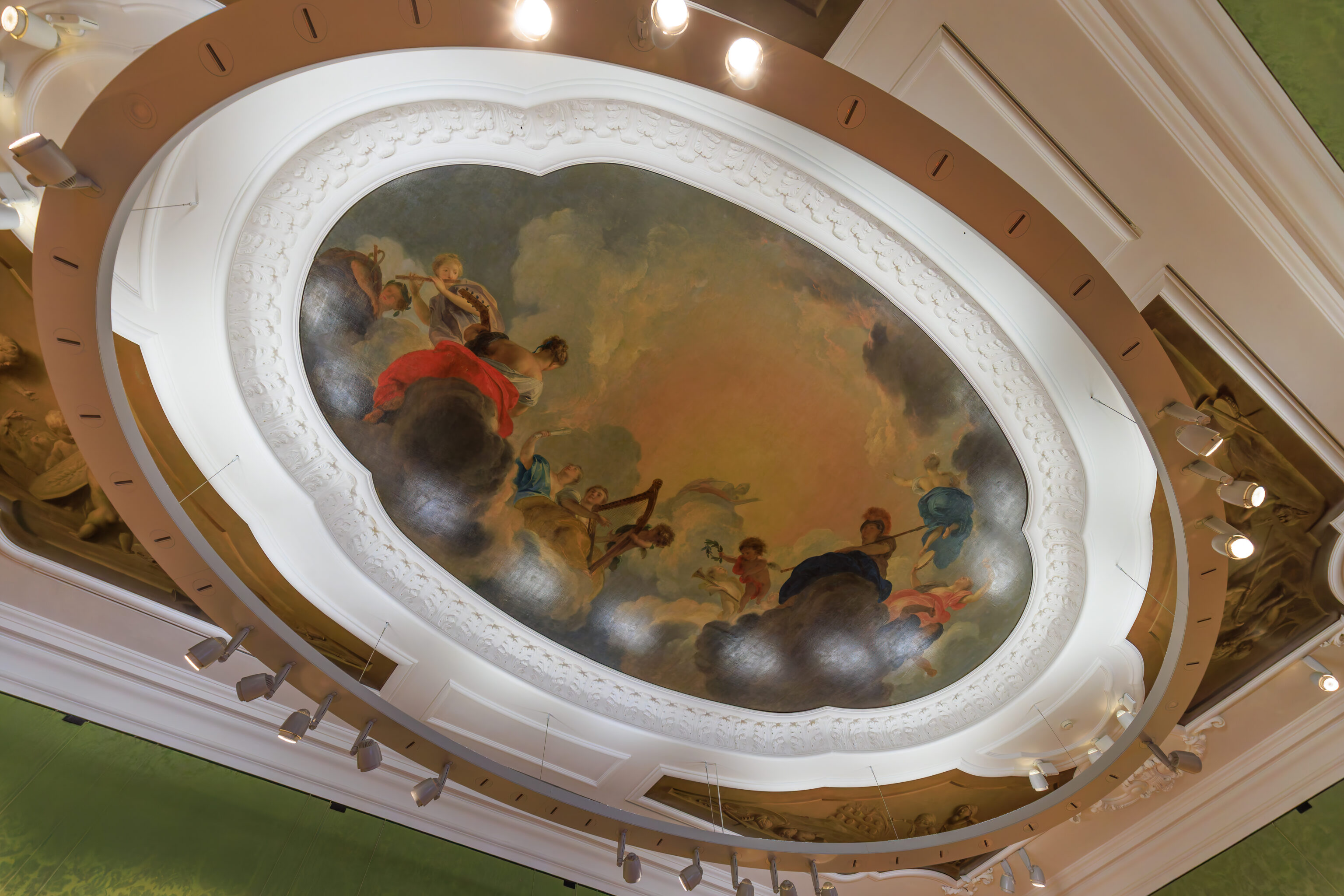
Another ceiling painting. We probably didn’t remember to look up in all the rooms.


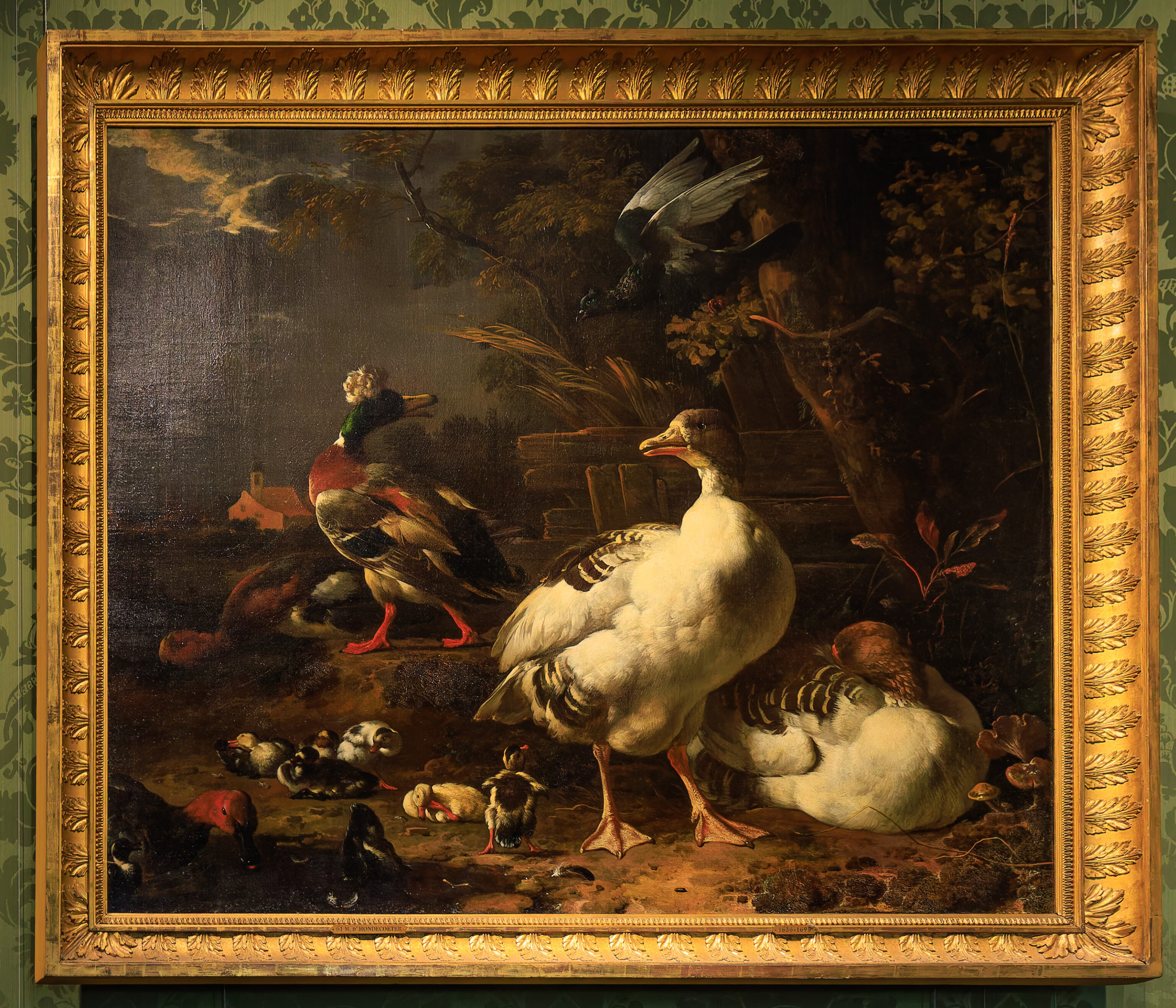





We continued on…

The Goldfinch by Carel Fabritius is the final painting that we saw which was featured on the museum map. European Goldfinches look like they’re pretty different from the American Goldfinches that we are familiar with. We have yet to spot an European Goldfinch.
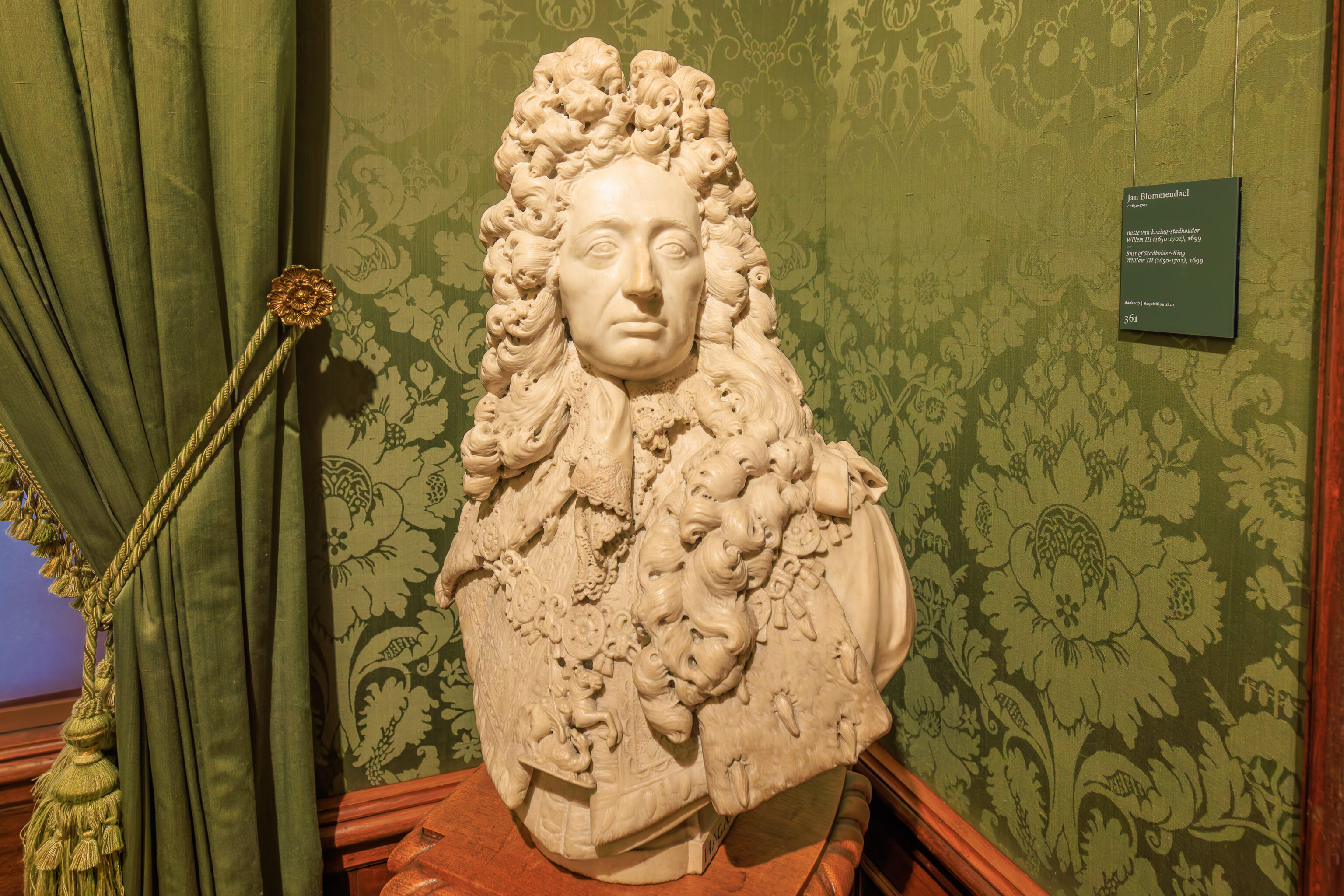
We ended up back by Vermeer’s Girl with a Pearl Earring and photographed the bust of William III in the corner of the room.
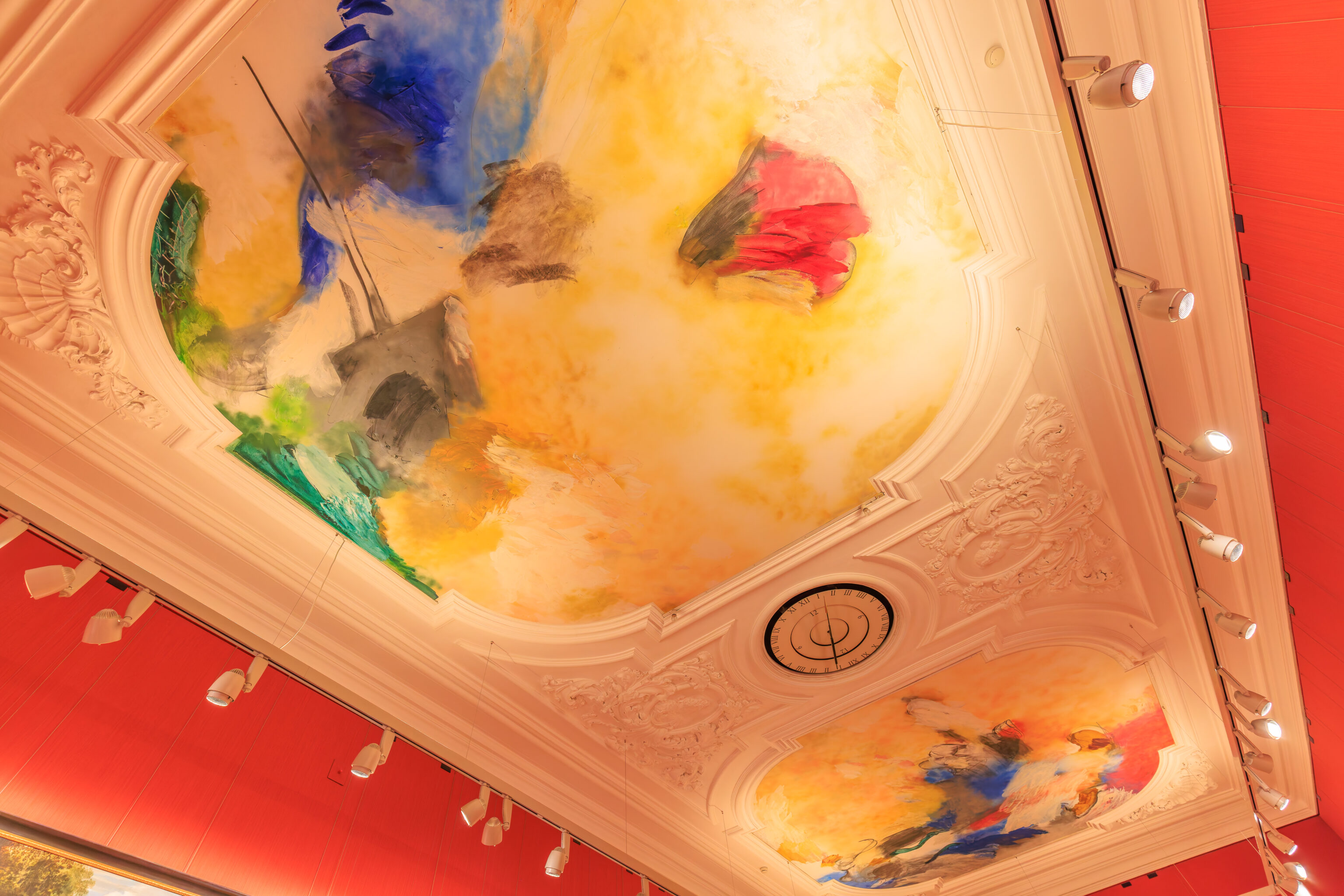
An interesting ceiling that is quite different from the art within the museum.
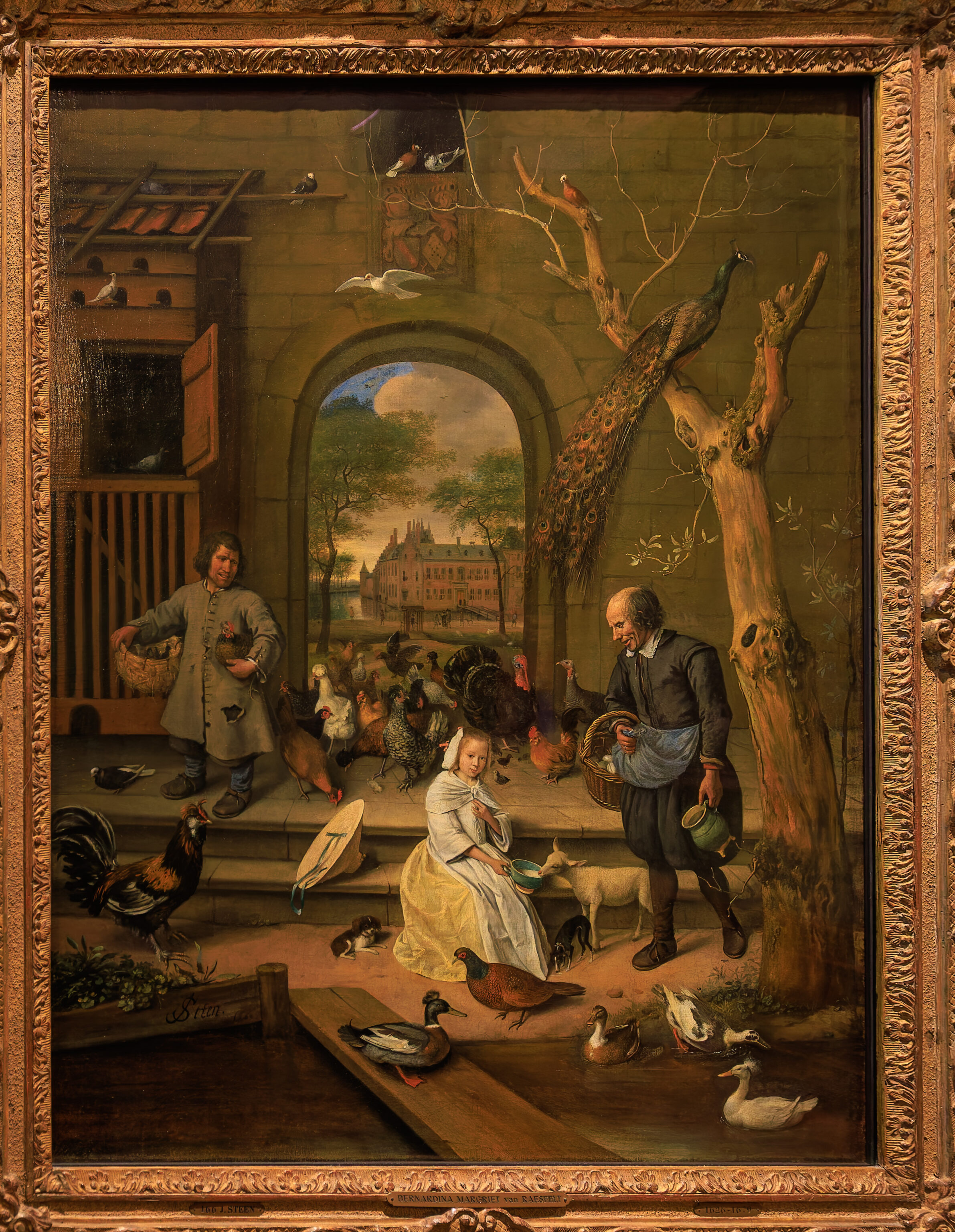

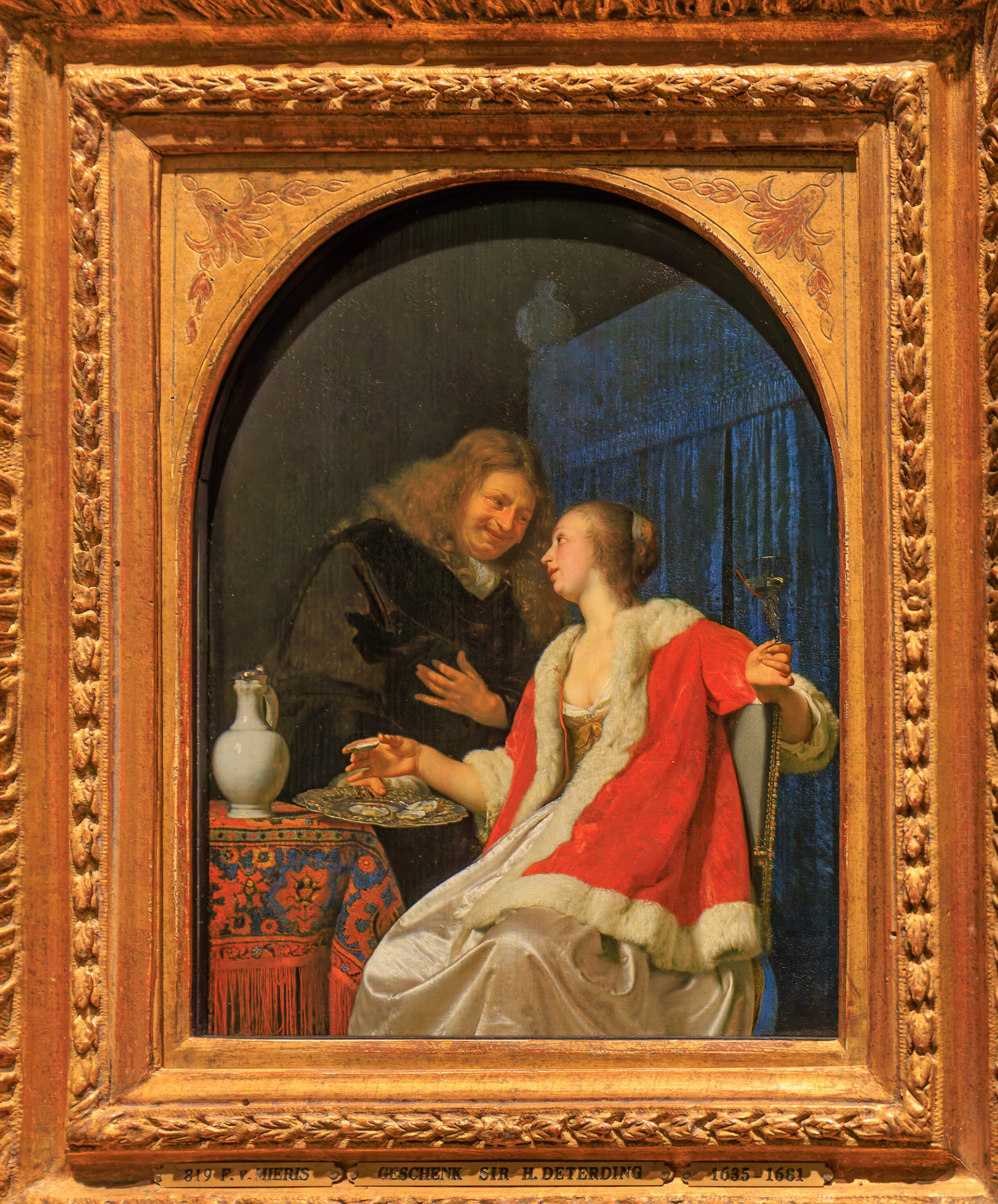
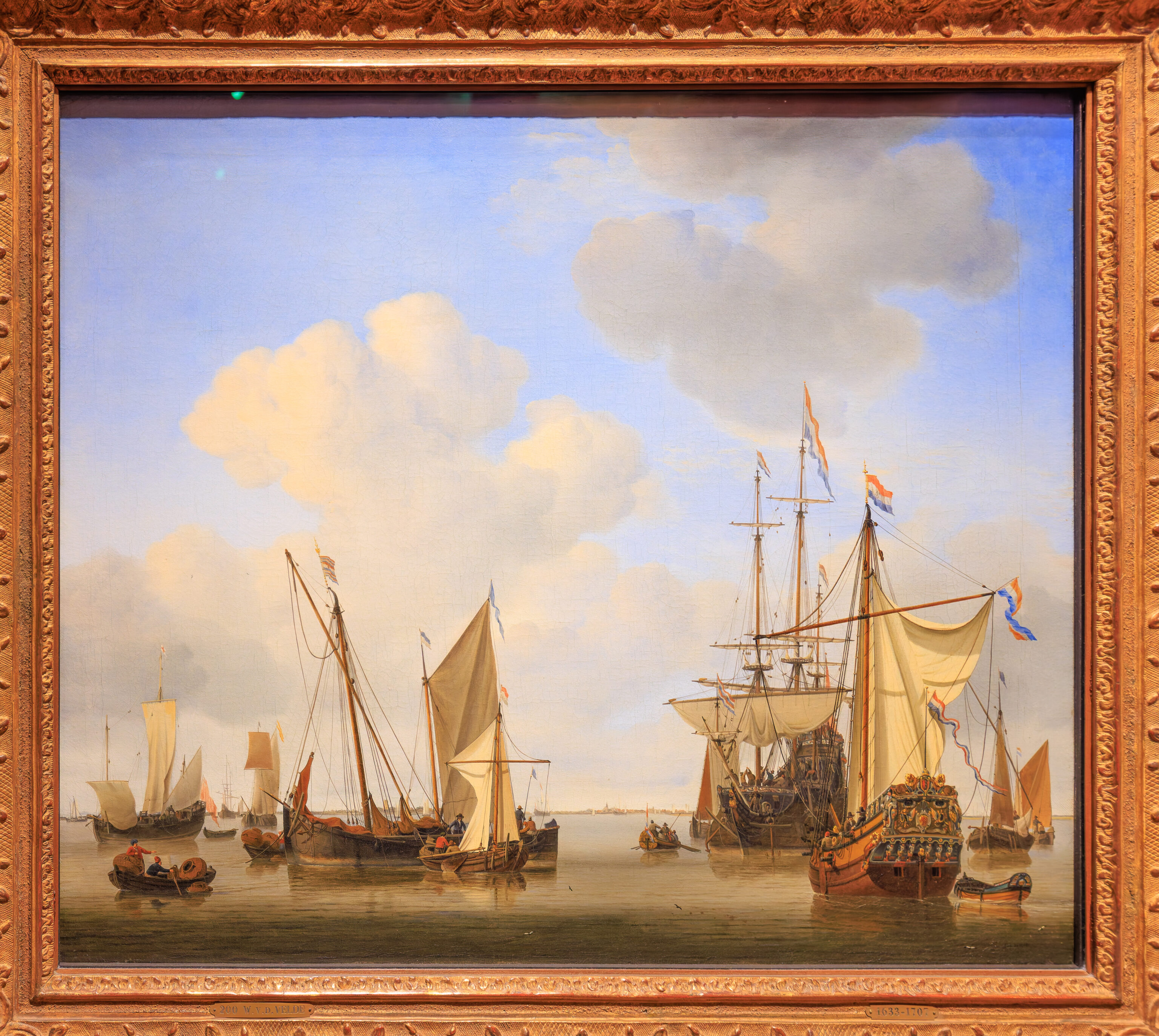
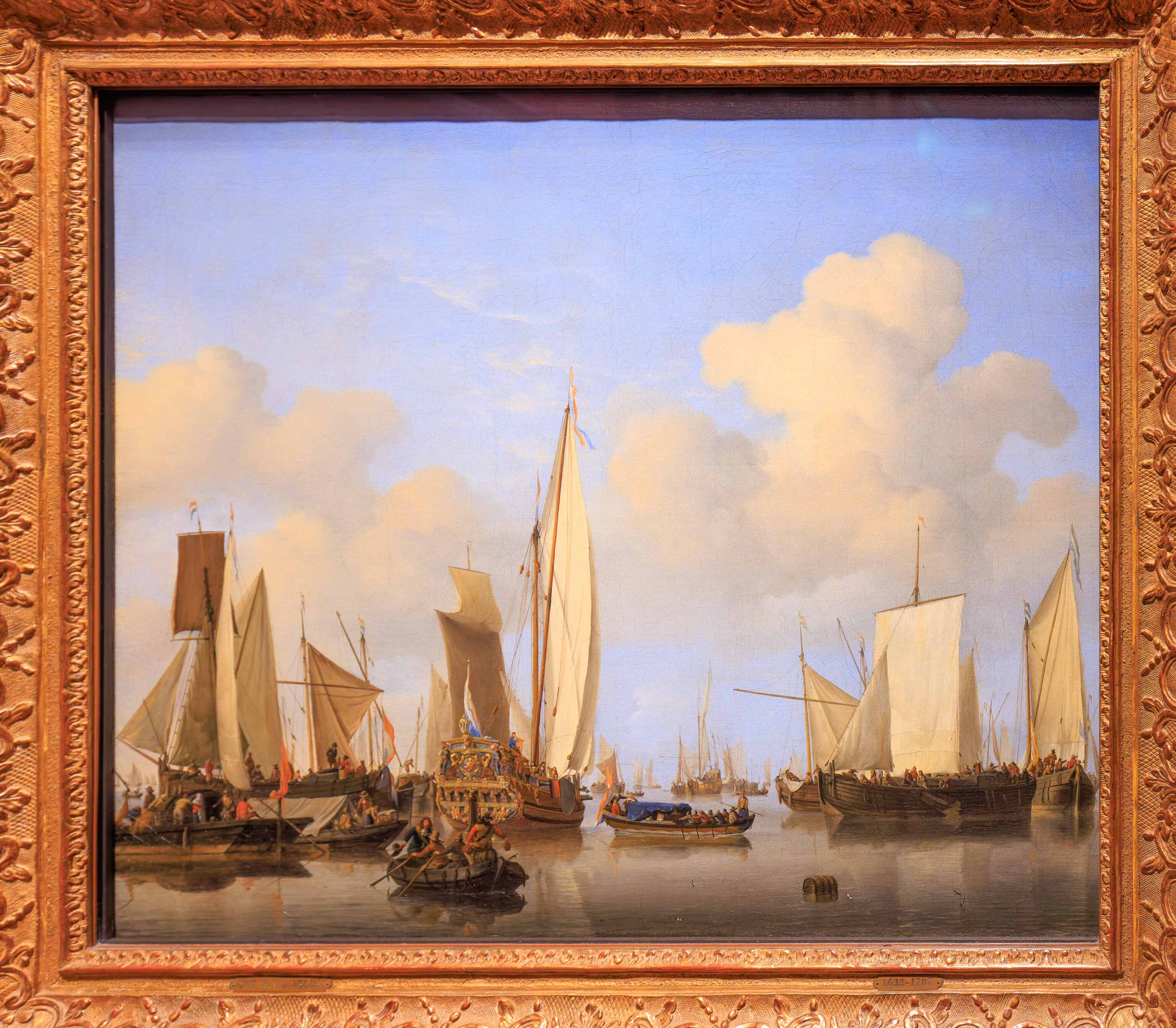
We continued walking through the museum, viewing various paintings including some naval scenes, something to be expected given that the Netherlands were a naval power with colonies around the globe.

This painting by Ferdinand Bol is a portrait of Dutch Admiral Michiel de Ruyter. We came across a monument to de Ruyter in the New Church in Amsterdam on our first day in the Netherlands as well as de Ruyter’s grave.
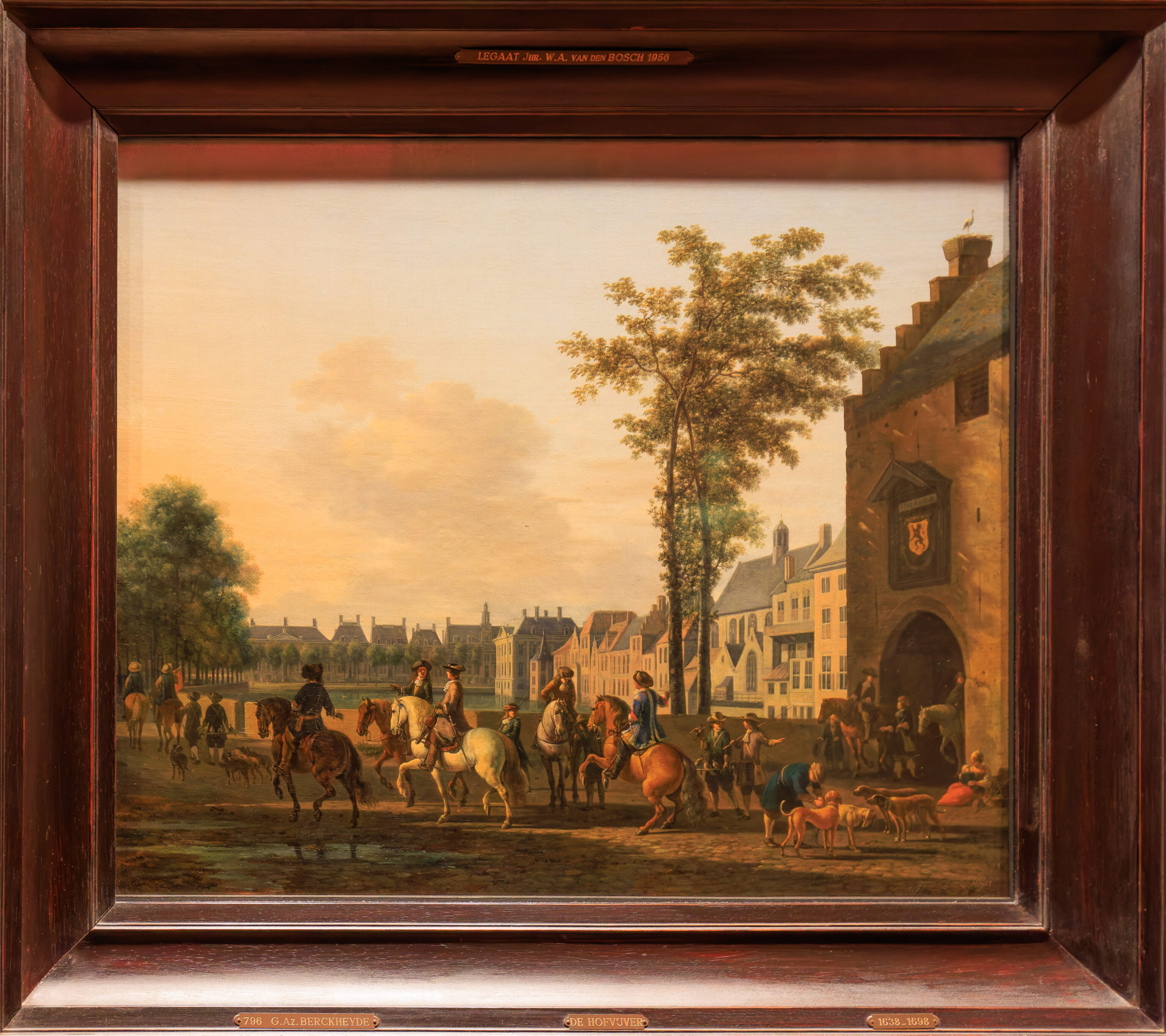
This scene takes place by the Hofvijver. The Mauritshuis is visible in the background on the right at the corner of the lake.

This scene shows the Oude Kerk in Amsterdam from the perspective of the Oudezijds Voorburgwal canal next to it. We were in roughly the same place, though not this exact perspective.



We passed a few more paintings depicting a variety of scenes.
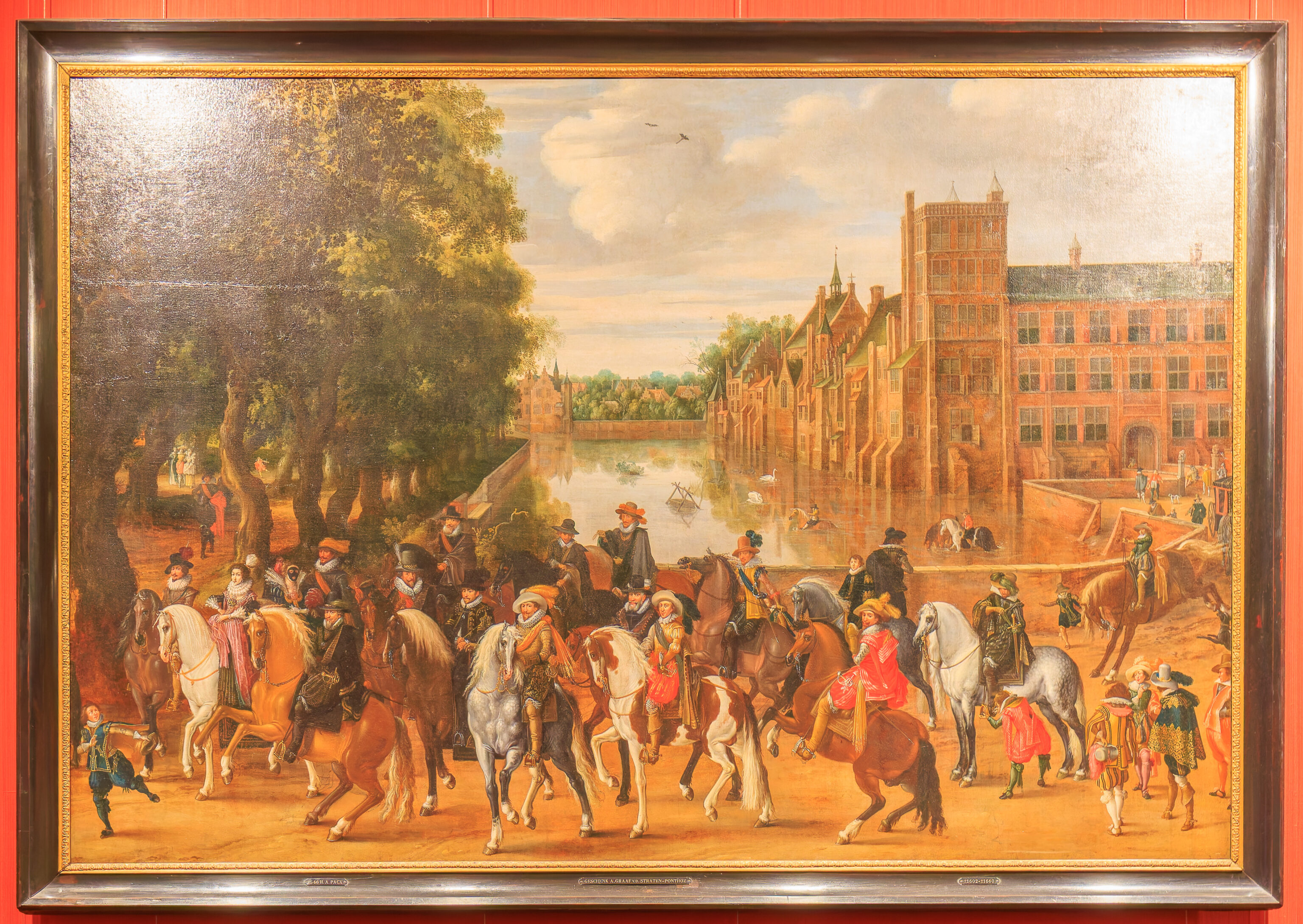
The final painting that we felt notable is this one showing a scene by the Hofvijver. The museum website text suggests that the Mauritshuis would be visible here if it had been constructed at this time. Given the description, the Mauritshuis should probably be at the far end of the painting and the Uitzichtpunt Binnenhof would be on the right edge in the foreground, probably just out of view. The perspective seems to be identical to that in the painting we saw previously, A Hunting Party near the Hofvijver in The Hague, seen from the Plaats.
After the Mauritshuis in Den Haag

After leaving the Mauritshuis, we decided to head back to the nearby market.
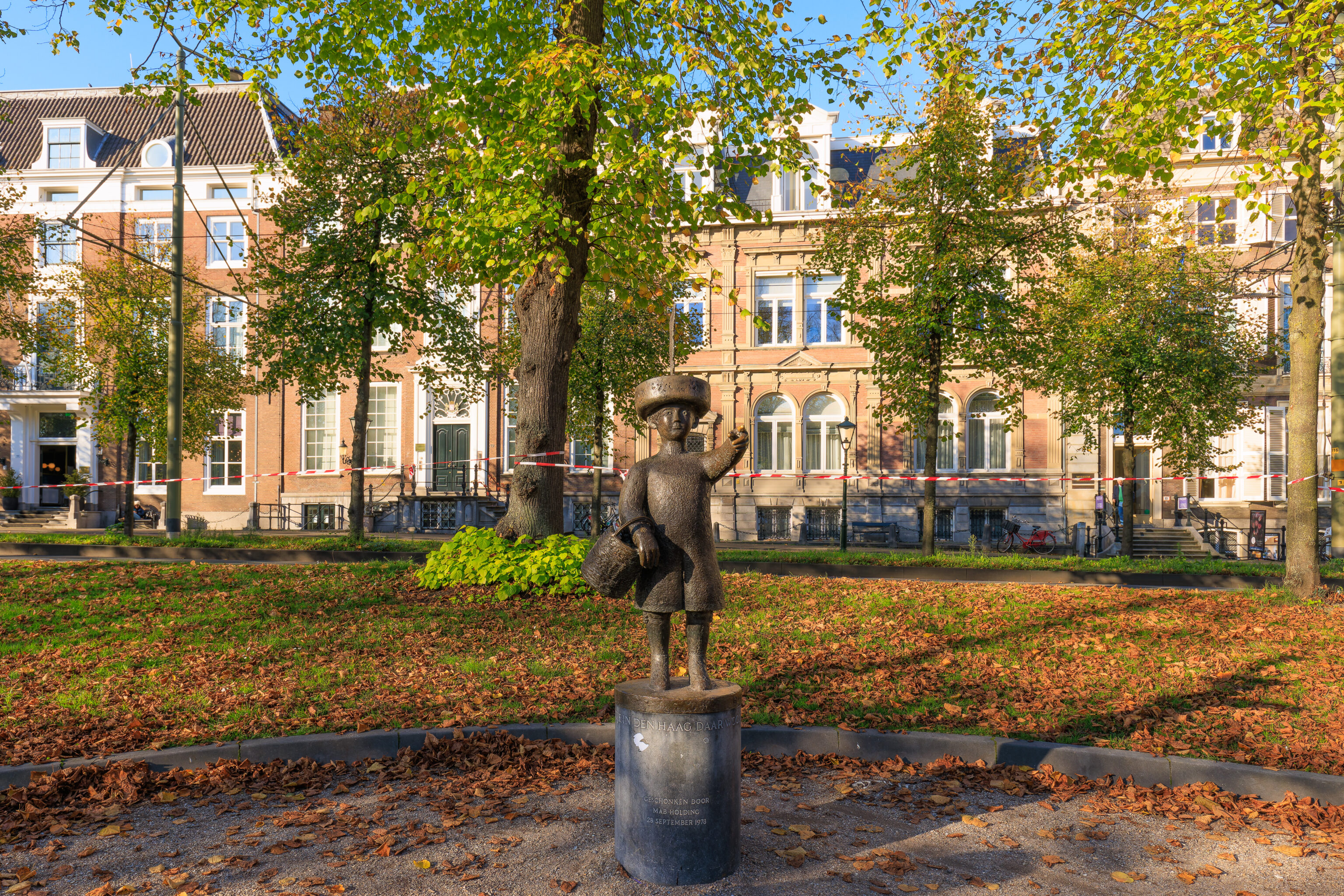
We noticed this statue, described as Haags Jantje (The Hague’s Little John) by Ivo Coljé in 1976. The subject of the statue comes from a nursery rhyme.

We noticed this stand that was grilling using wood from Namibia. We decided to give it a try.
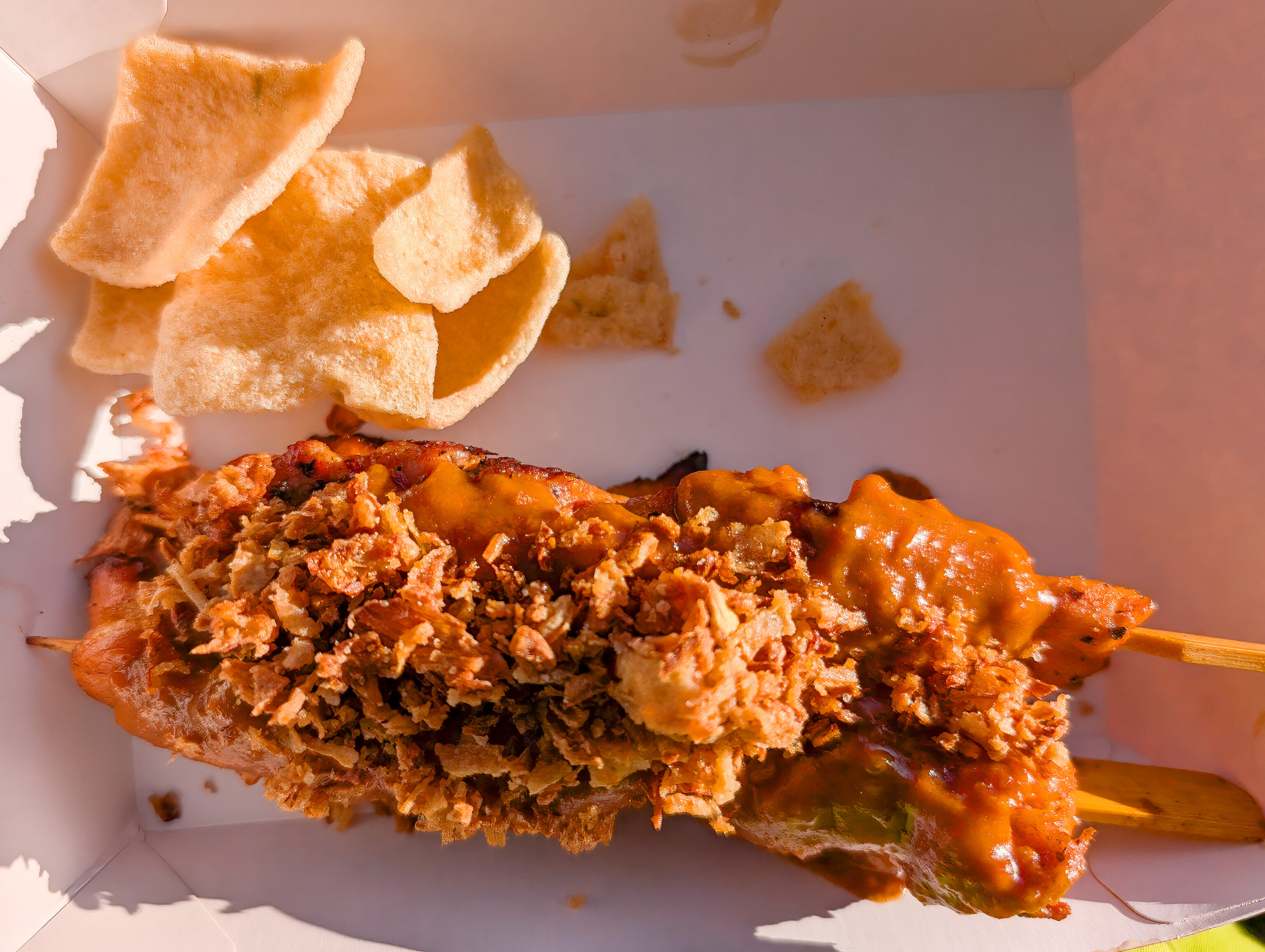
The stand sells chicken satay. It was served with fried onion pieces on top and a few chips of unknown type on the side. It was good, though the chicken felt a bit overcooked. It is unclear if there is really any difference from using Namibian wood vs some other wood. If there is, we couldn’t tell.

We also got some strawberries and raspberries from a stand that only sold these two products. You could get 3 items for €5. Not Japanese quality but the strawberries were mostly pretty good and were more consistent than the typical American supermarket package of strawberries. The raspberries were big and a bit lacking in flavor.

We started to head back to the train station, passing by the Den Haag coat of arms suspended above the road.
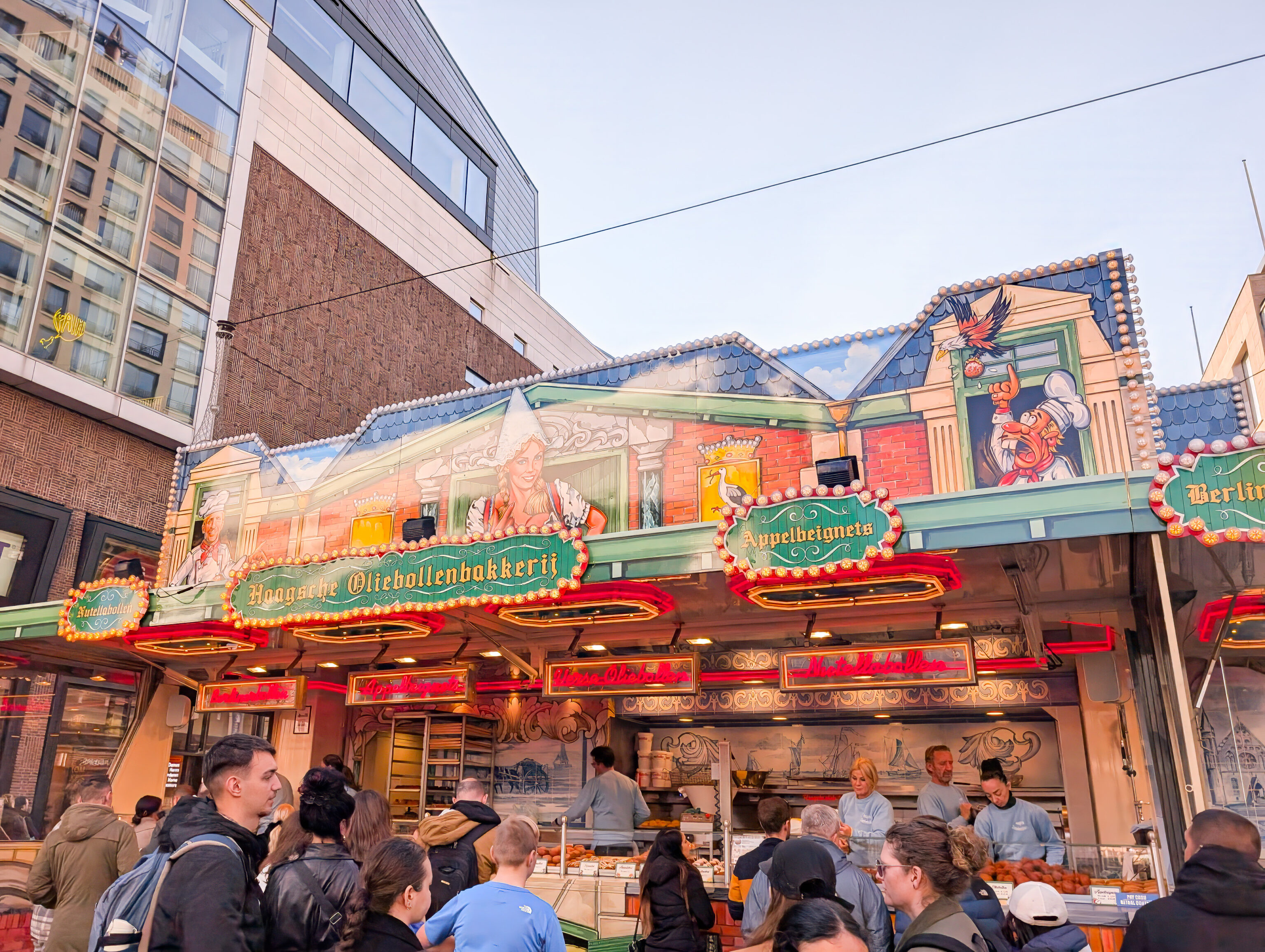
The stand we saw earlier, Haagsche Oliebollenbakkerij, was now very busy. They primarily sell oliebolllen, described on Wikipedia as Dutch beignets.



We got two, one that was described as a Dubaibollen and had a pistachio filling with chocolate on the outside. The other was apple with small chunks of apple inside. Both were excellent and not too sweet.
We weren’t sure where the Dubai reference came from but later on in the day we saw a shop that sells Dubai chocolates, containing pistachio.

We noticed this manhole cover featuring what looks like a flying stork, or at least, its probably a stork given that it is on the city’s coat of arms.

We decided to go check out the library as it was nearby. A guide book suggested it was worth a visit. While it is in a modern building and looks to be a very good library, there isn’t really much reason to visit as a tourist. It is a library. It has books.

The only thing really notable was this commentary on the upcoming US presidential election!
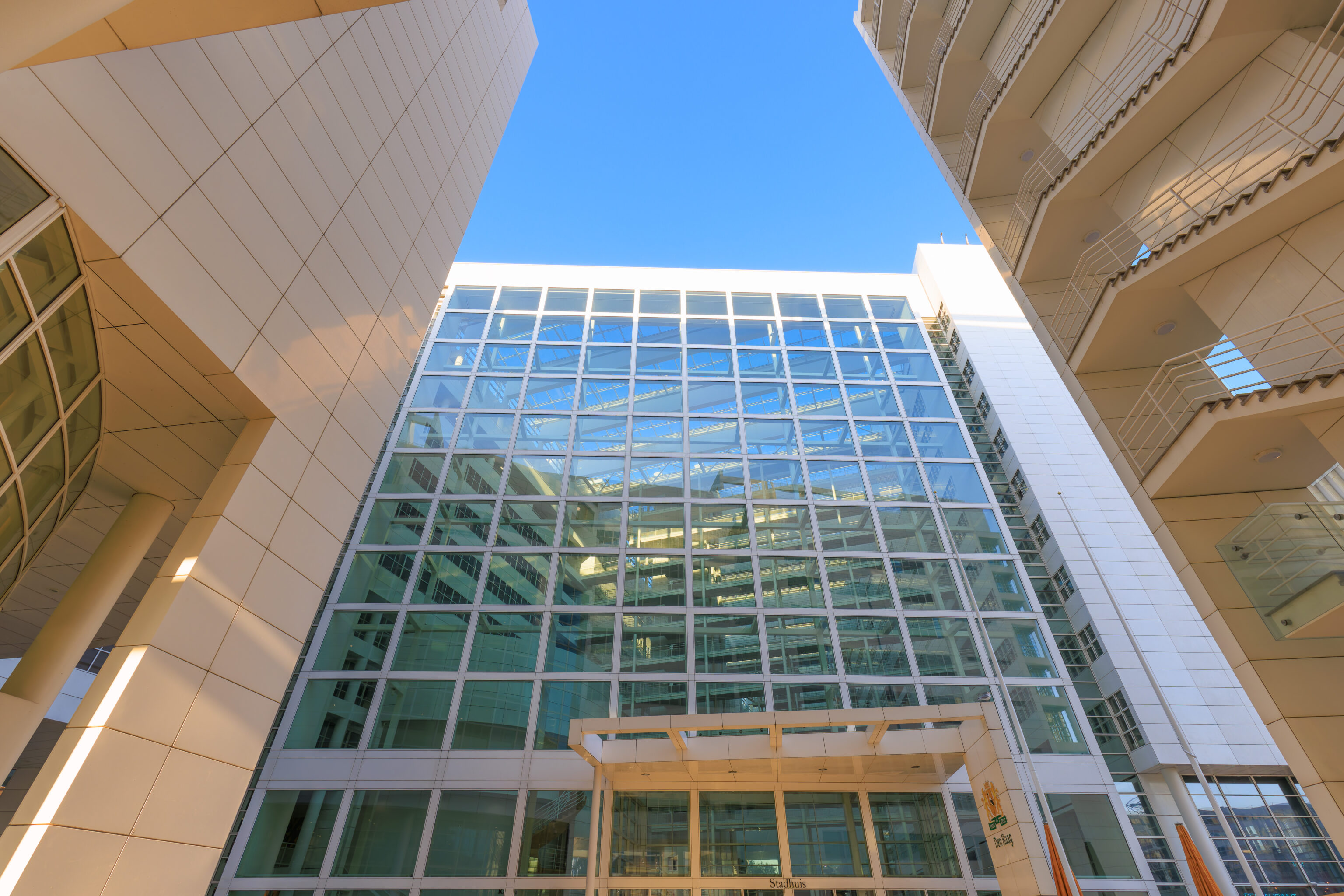
City Hall is right next to the library in an equally modern building.
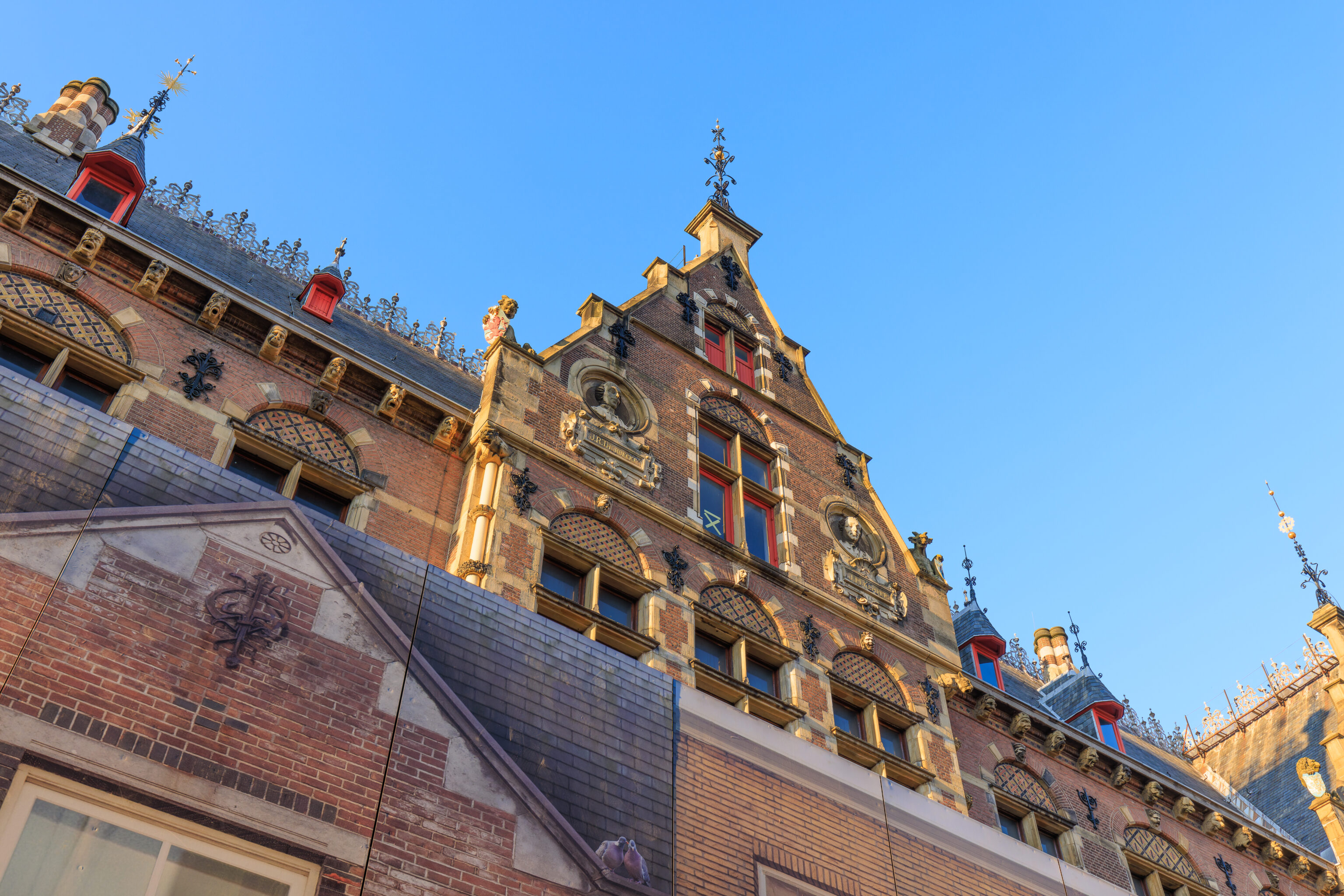


We continued on to the train station, walking on a different path from when we arrived here. We passed by the Binnenhof on our left.

We walked by LouLou, a bubble tea shop, as we continued to Den Haag Centraal. We decided to give it a try. The actual tea flavor was ok but the tapioca pearls were hard in the middle, probably undercooked.
They oddly both heat sealed the cup and put a lid on, which was confusing when the paper straw wouldn’t go in! We ended up needing a new straw because ours was no longer sharp enough to puncture the plastic seal.

We passed over this canal near the train station.
Amsterdam

It was just after sunset when we returned to Amsterdam Zuid (South). There was still a bit of color in the sky as we waited for a tram on line 5 to head to dinner in the Leidseplein neighborhood north of the Rijksmuseum. There were many restaurants to choose from in the area.

After getting off the tram, we noticed this sculpture of two hands. It is a monument, titled Against the Tide, to Peter R. de Vries, a journalist that was murdered in relation to a gang trial, and was installed recently in July, three years after the murder.

We walked past a nearby canal.


We decided to visit De Blauwe Hollander (The Blue Hollander), a Dutch restaurant.

We started out with some ballen, specifically, bitterballen. They were nicely fried with a hard shell and creamy interior.

The stamppot was definitely different from what we expected, basically, stewed beef atop a bed of carrot mixed with potatoes. The beef was the same kind used in Taiwanese braised beef noodles, which was unexpected as we’ve never encountered this kind of beef in Western cooking.
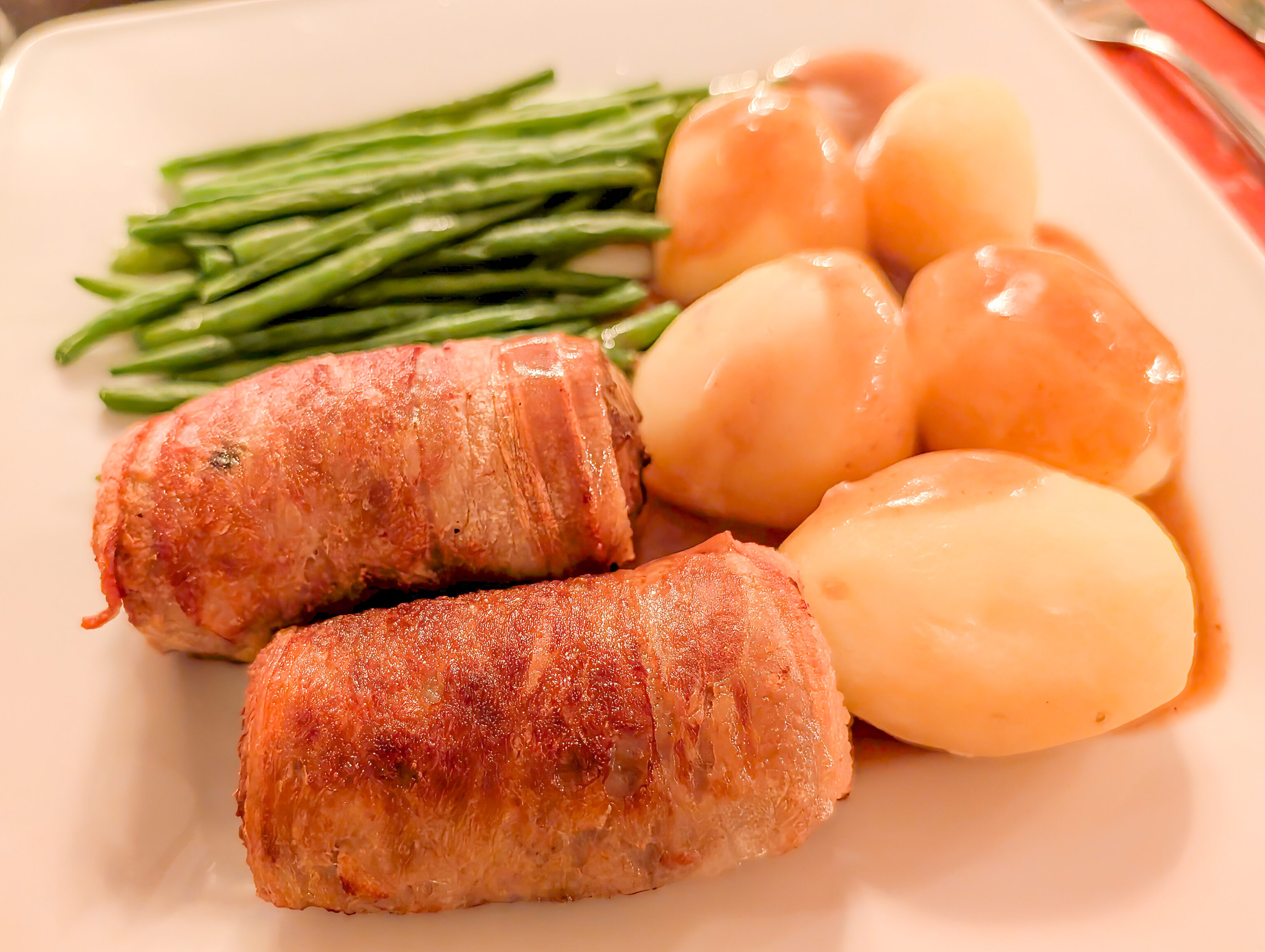
The slavinks was nice with a bacon shell around a sausage-like beef center. The bacon was somewhat crispy.
This turned out to be one of the busier restaurants in the area. There were a few tables available when we got seated but it was completely full when we left.
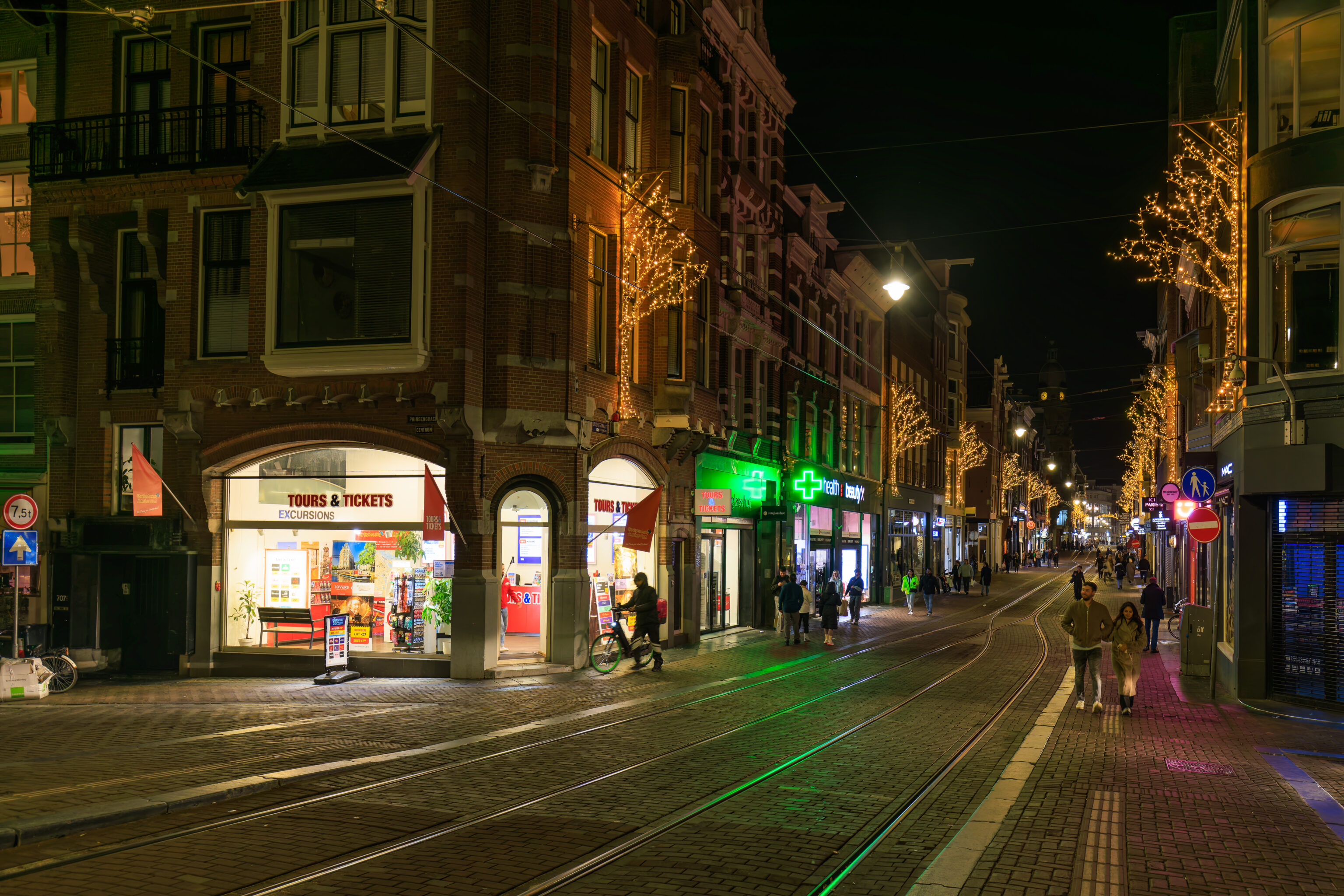



We walked around after dinner for a bit. The Leidseplein area, near the famous Rijksmuseum and other cultural sites, was pretty lively.
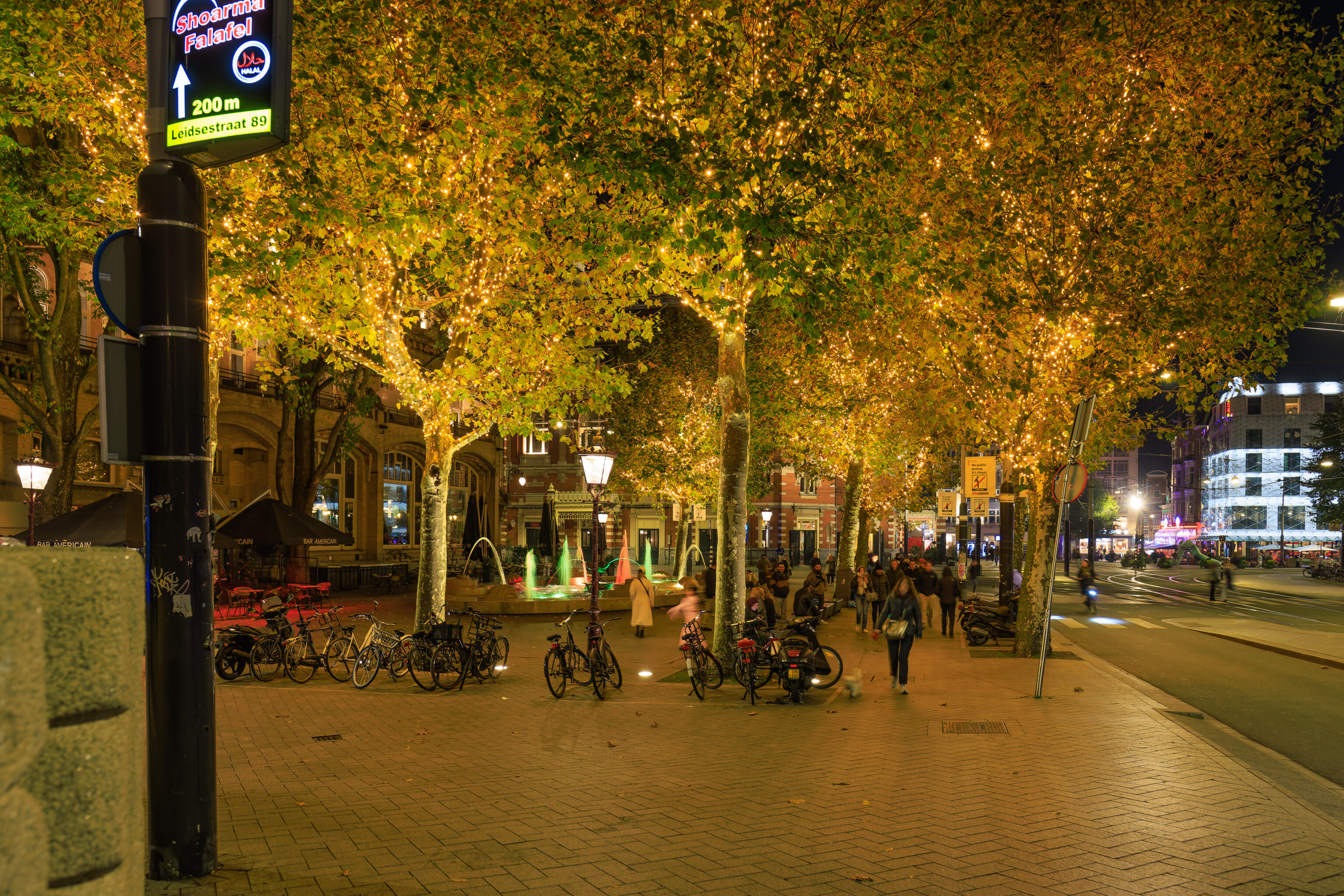
A nice scene with some illuminated trees and a fountain. We took the tram back to the Apollo Hotel to end the day.
Changelog
- December 19, 2024: Corrected the bird on the Den Haag coat of arms being a stork and not a heron, thanks to commenter Hees Daman.


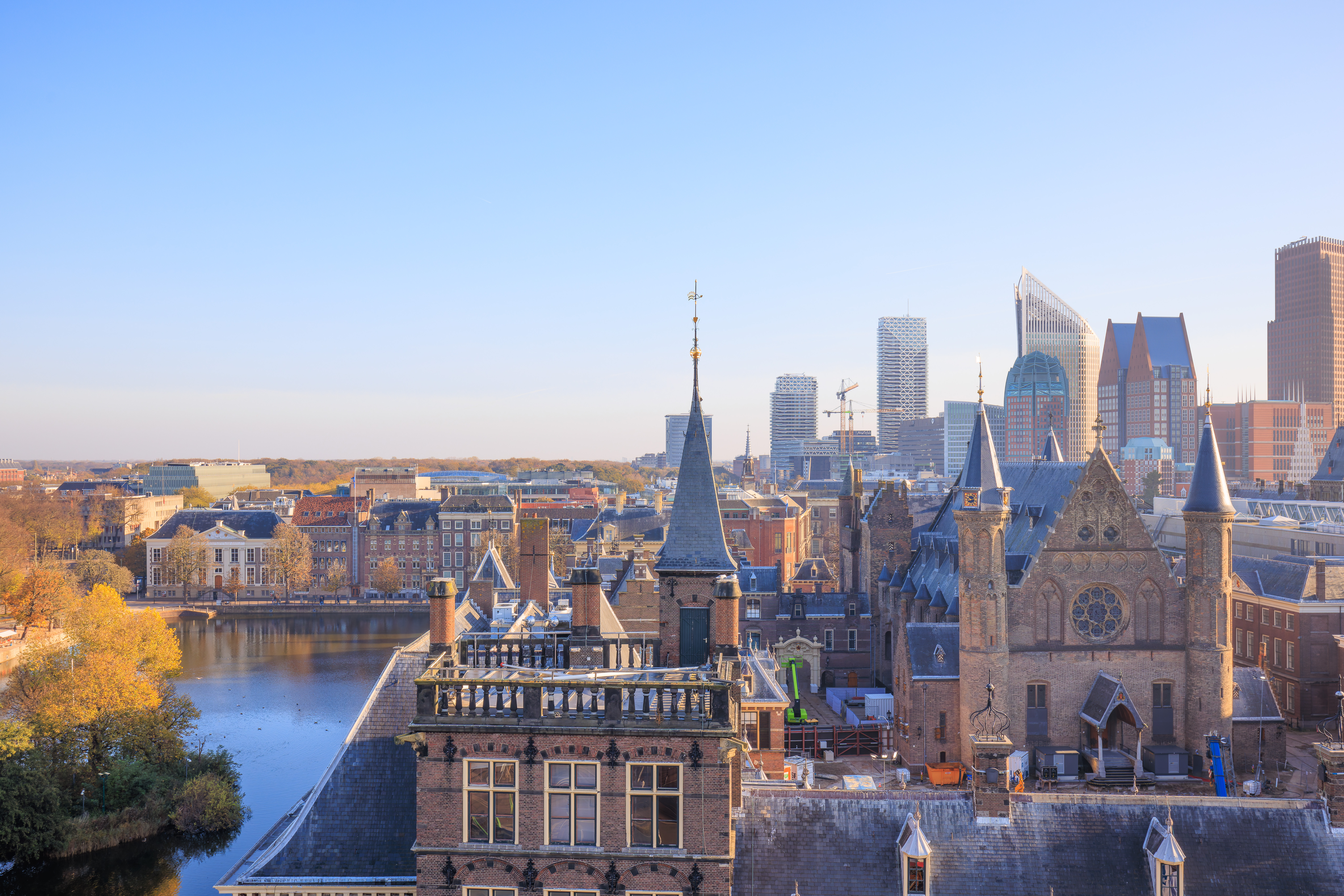
The heron you mention a few times, is actually a stork. Except the one at the fish stand, that is a real heron.
In the Middle Ages, storks could be found in abundance near fish markets, doing the cleaning up. Although many storks did nest once in and around The Hague, they didn’t do so after they couldn’t find enough food. But luckily some return to nest here again.
So the inspiration to put a stork on the city arms is coming from these birds.
Thanks! Appreciate the correction and the history!